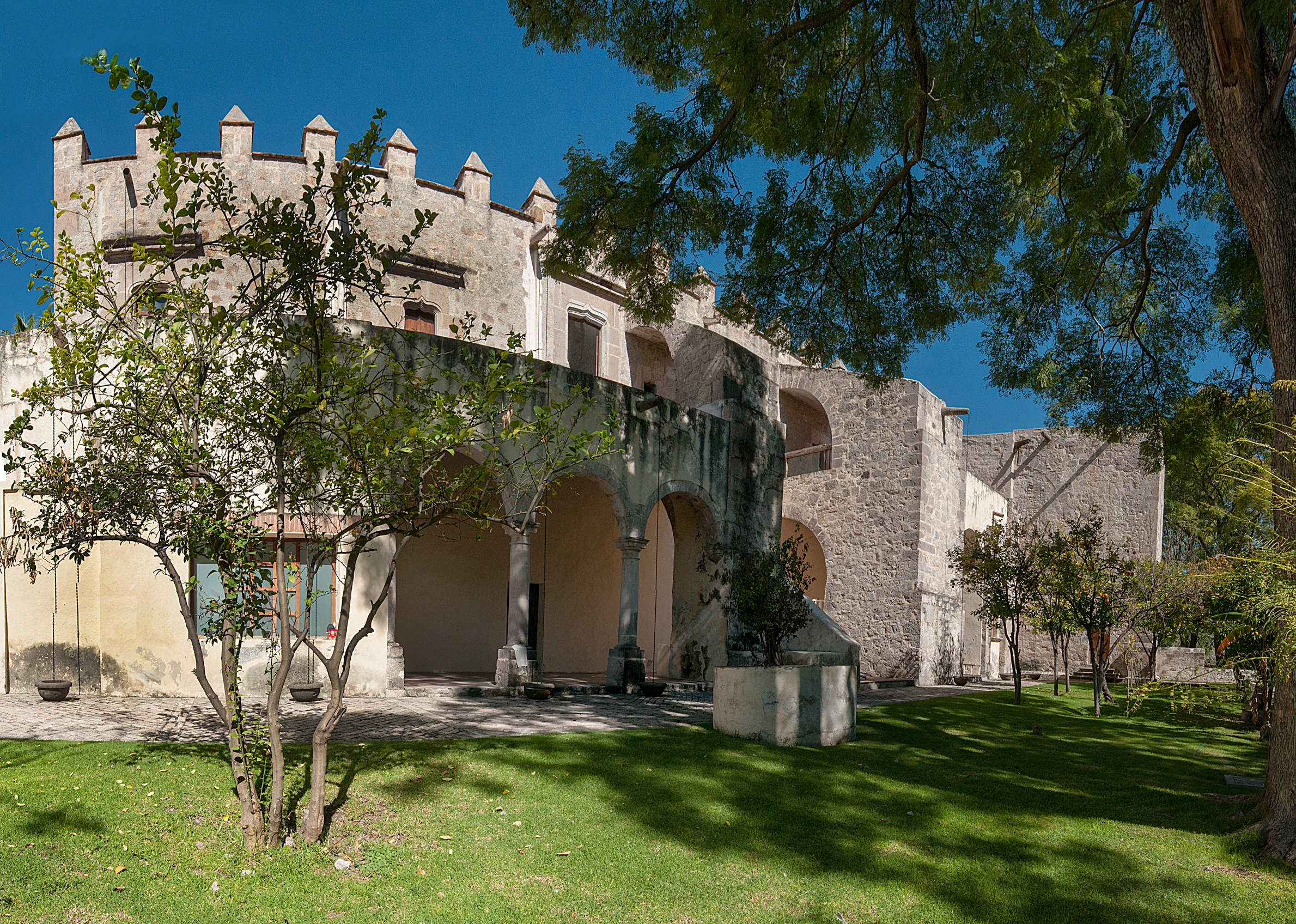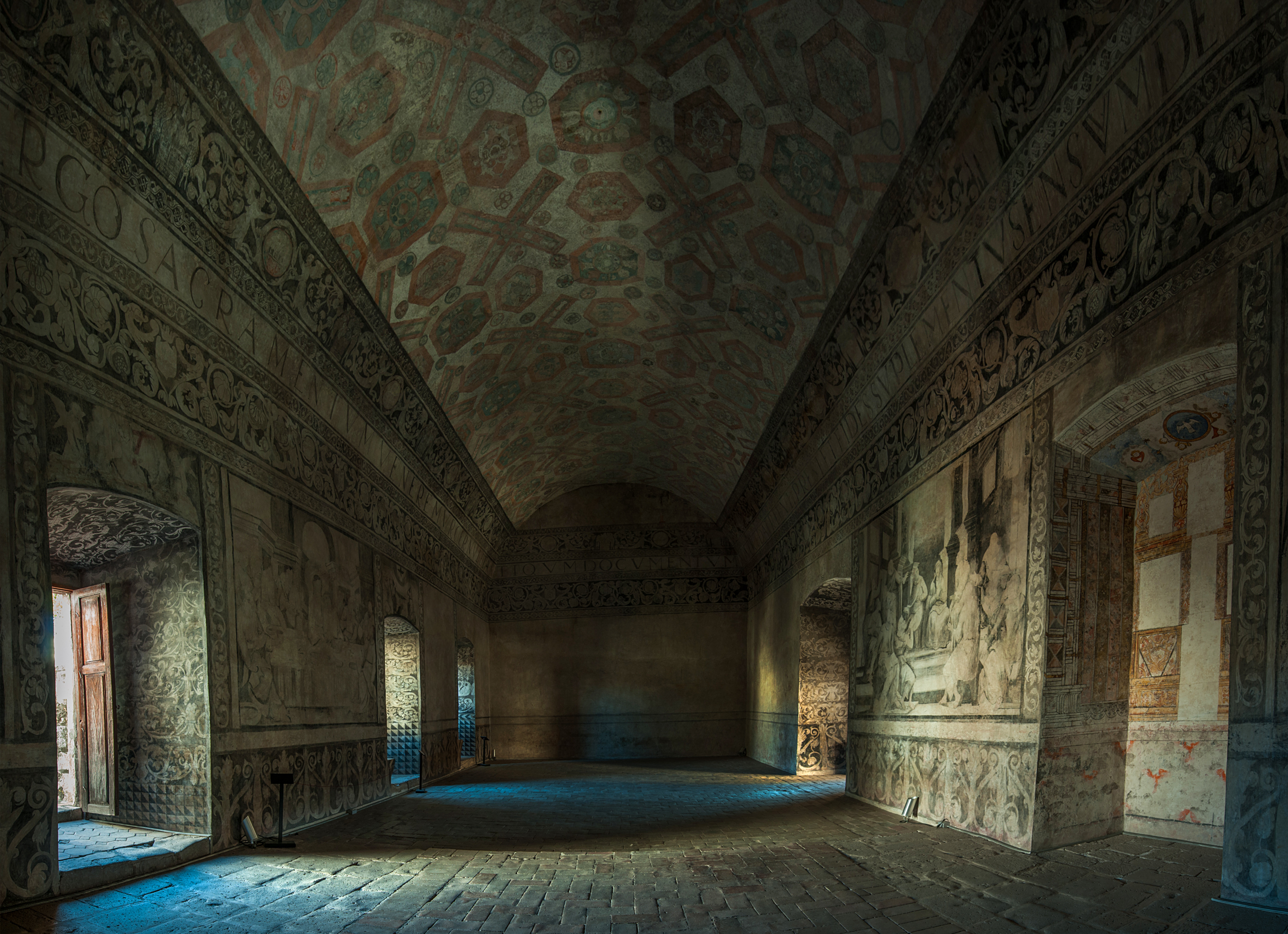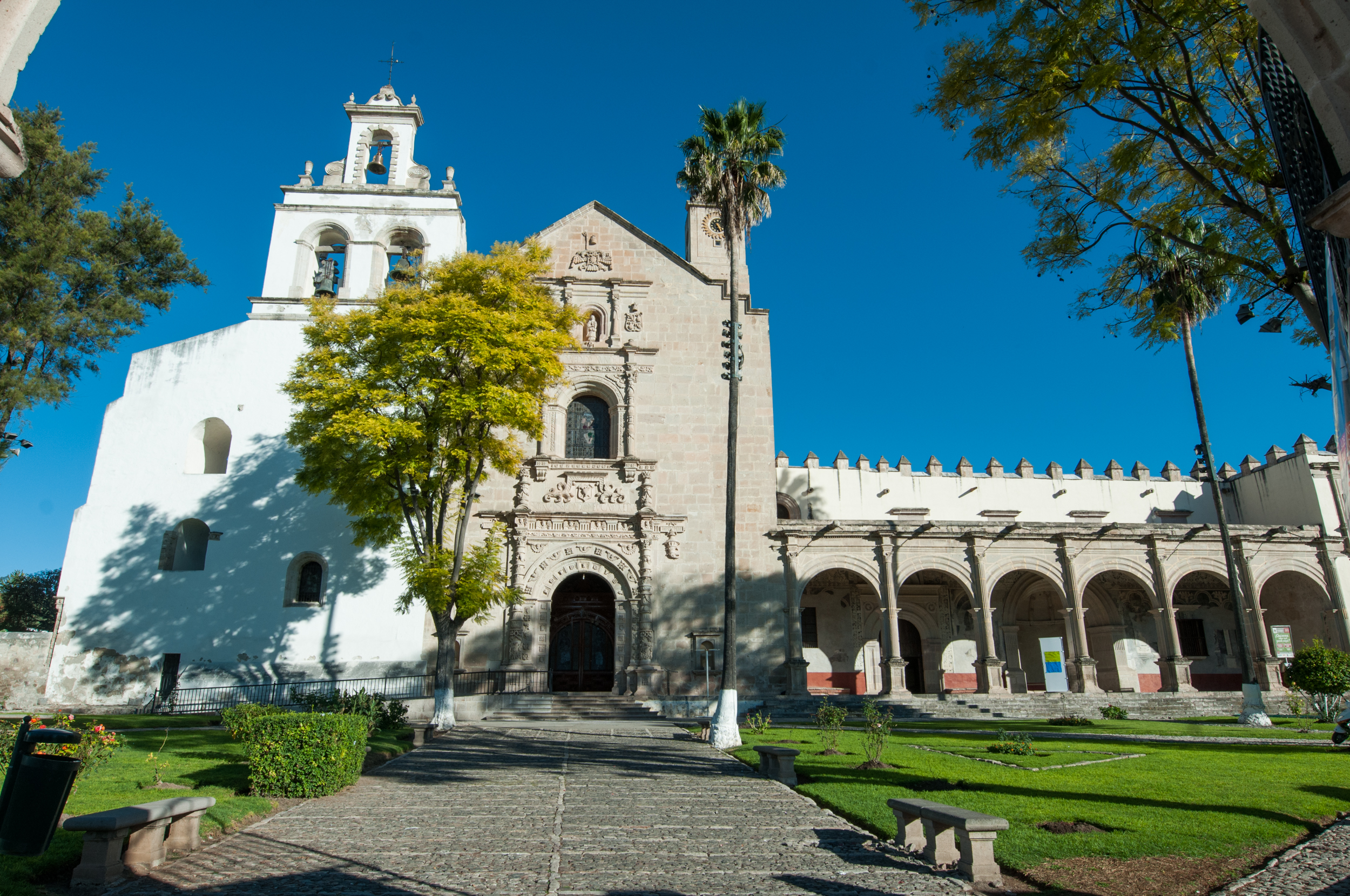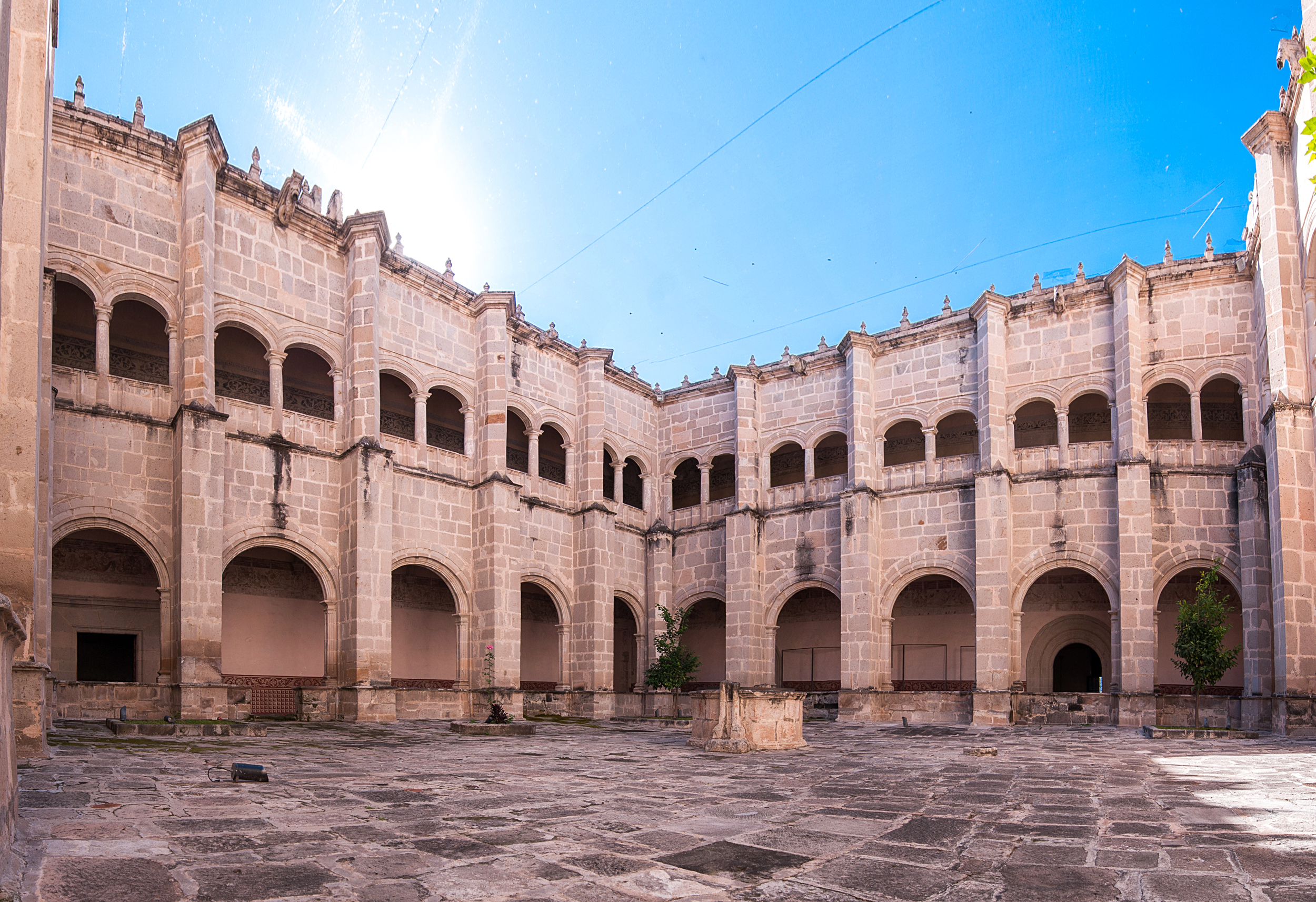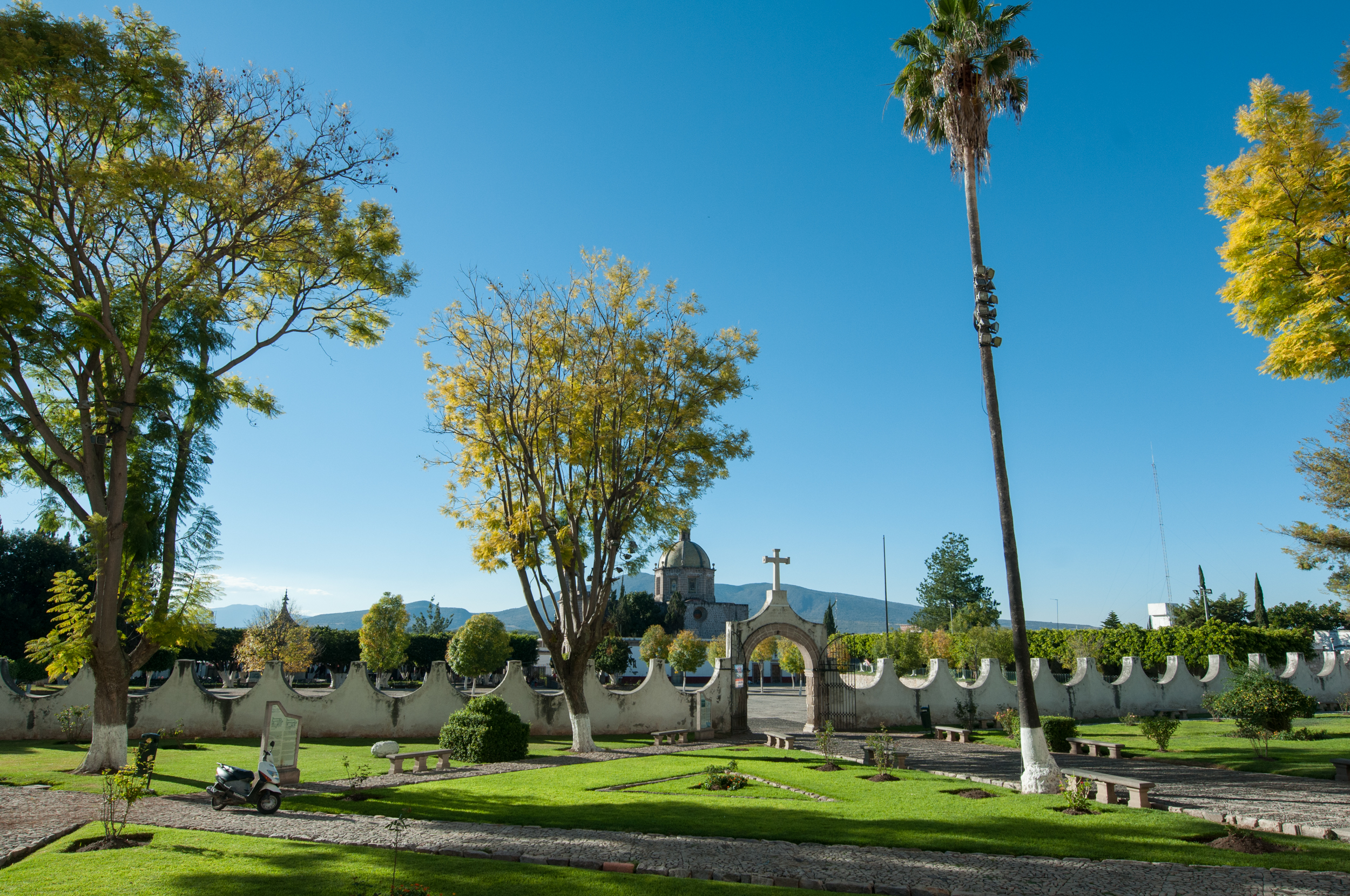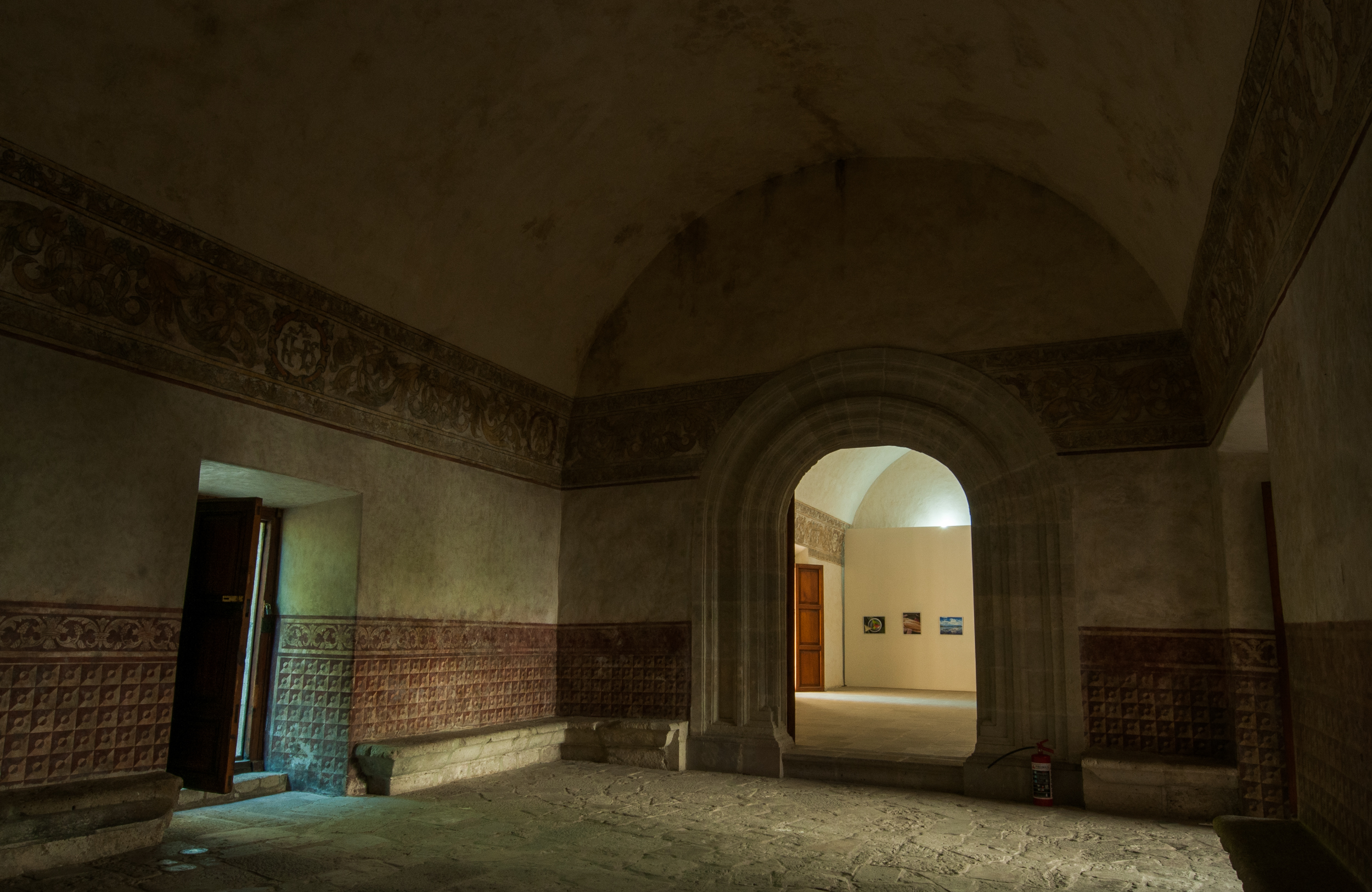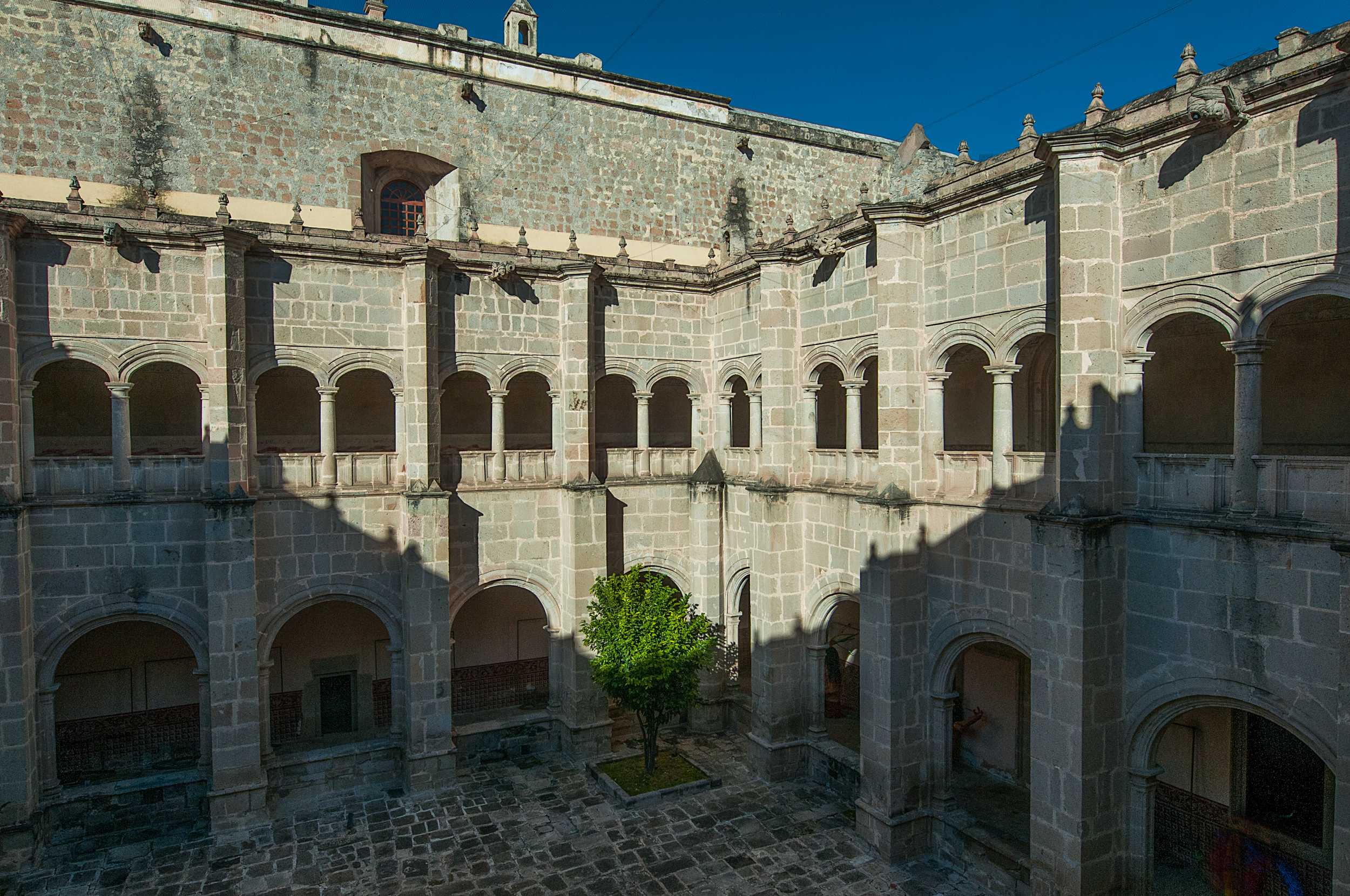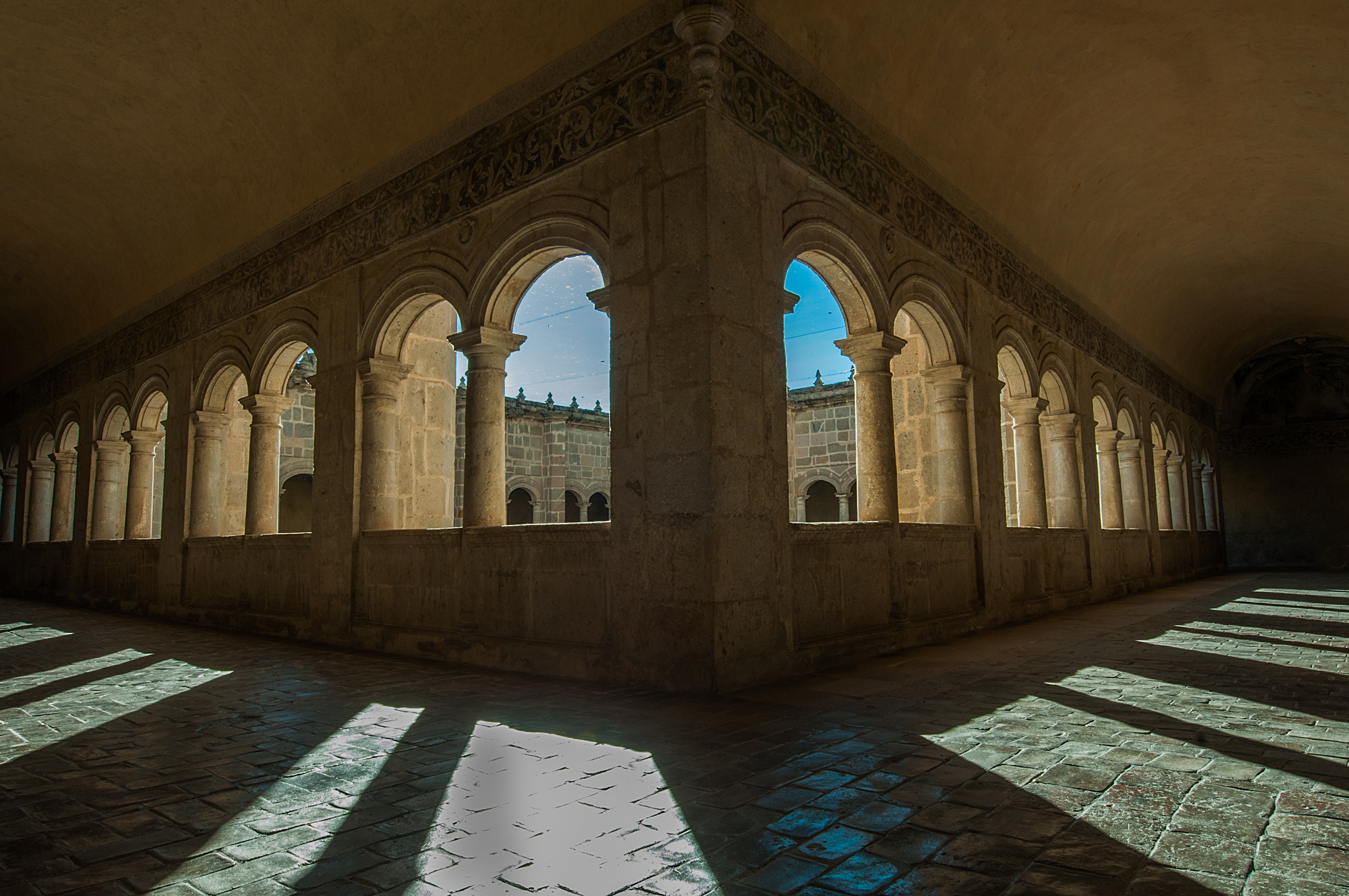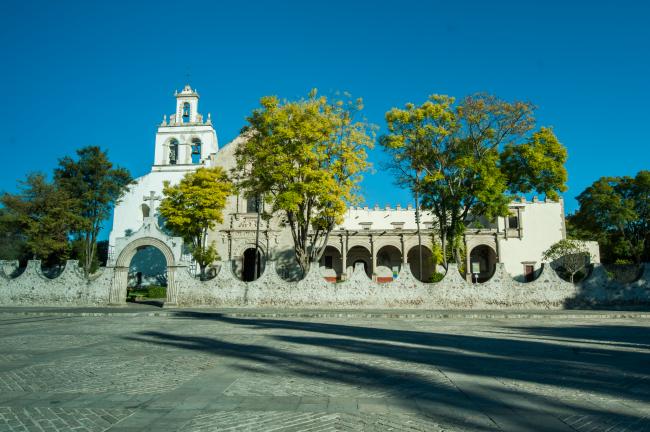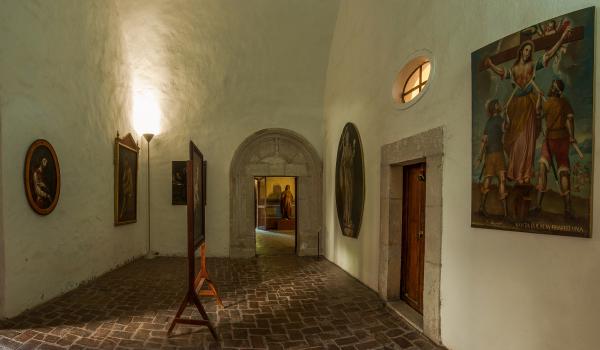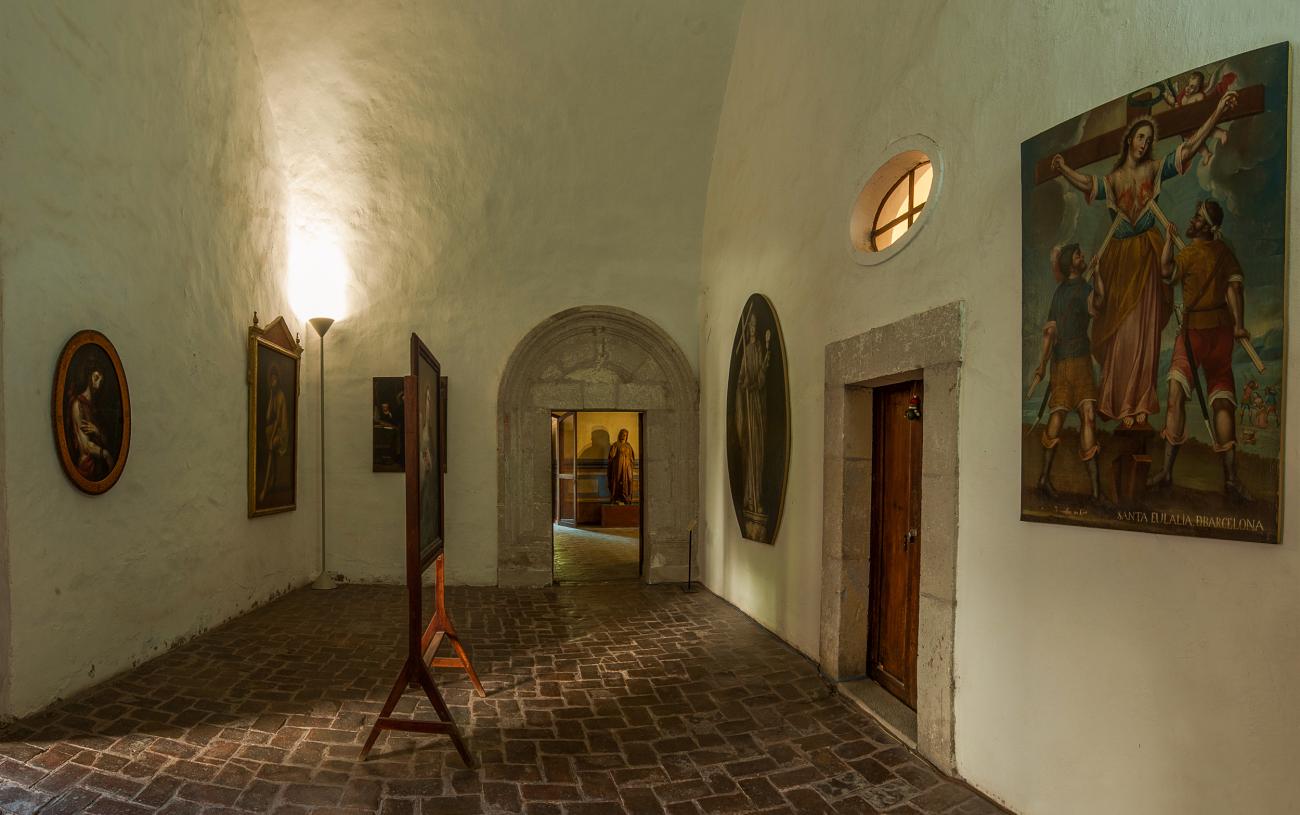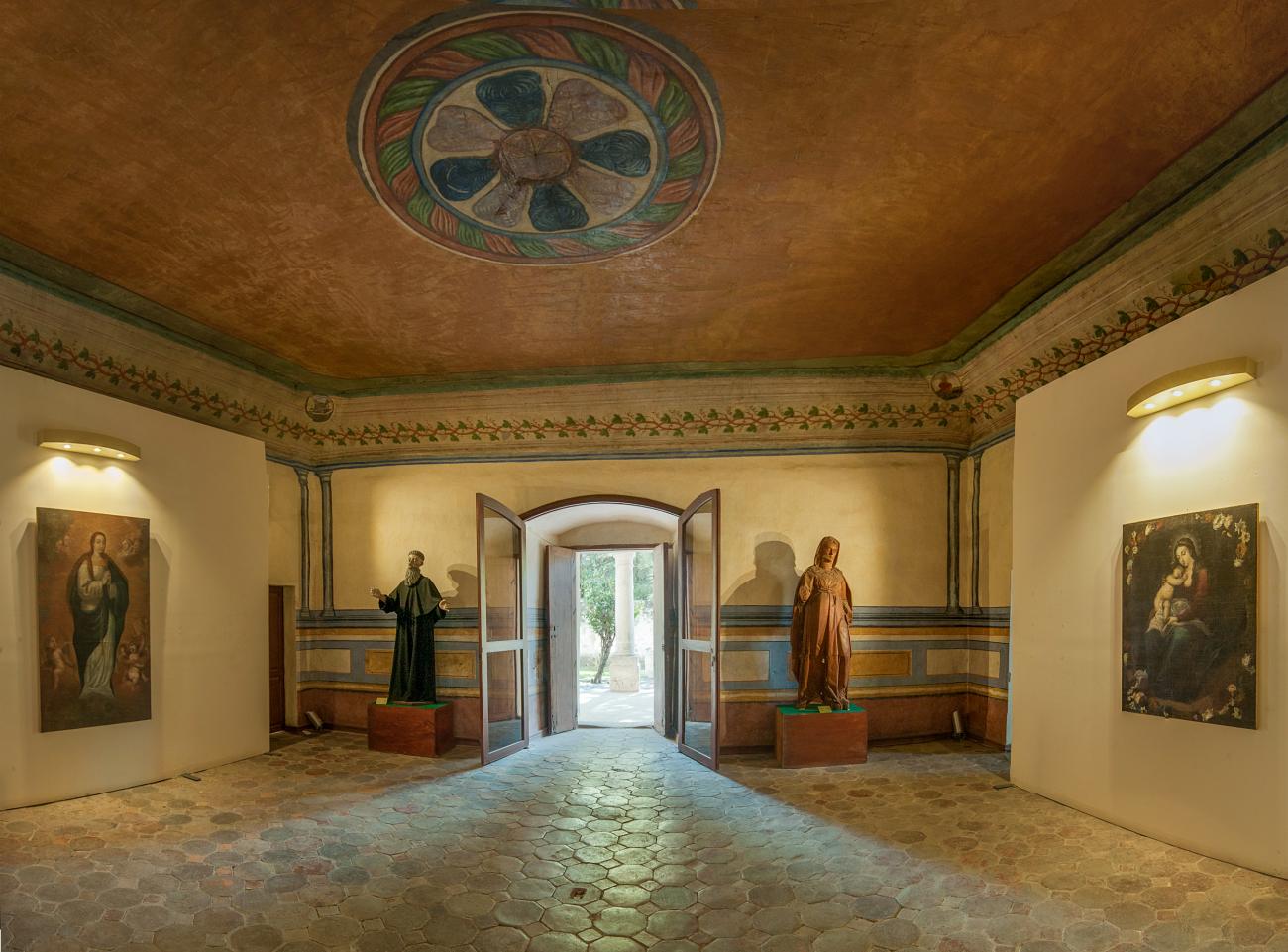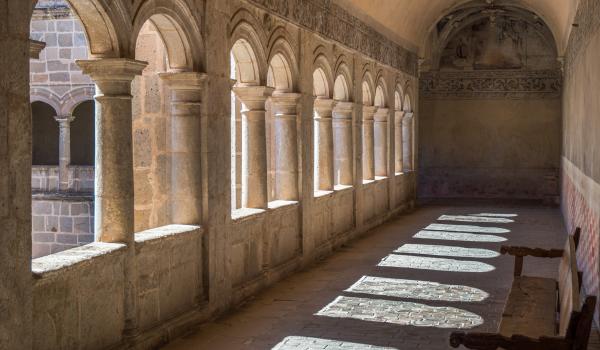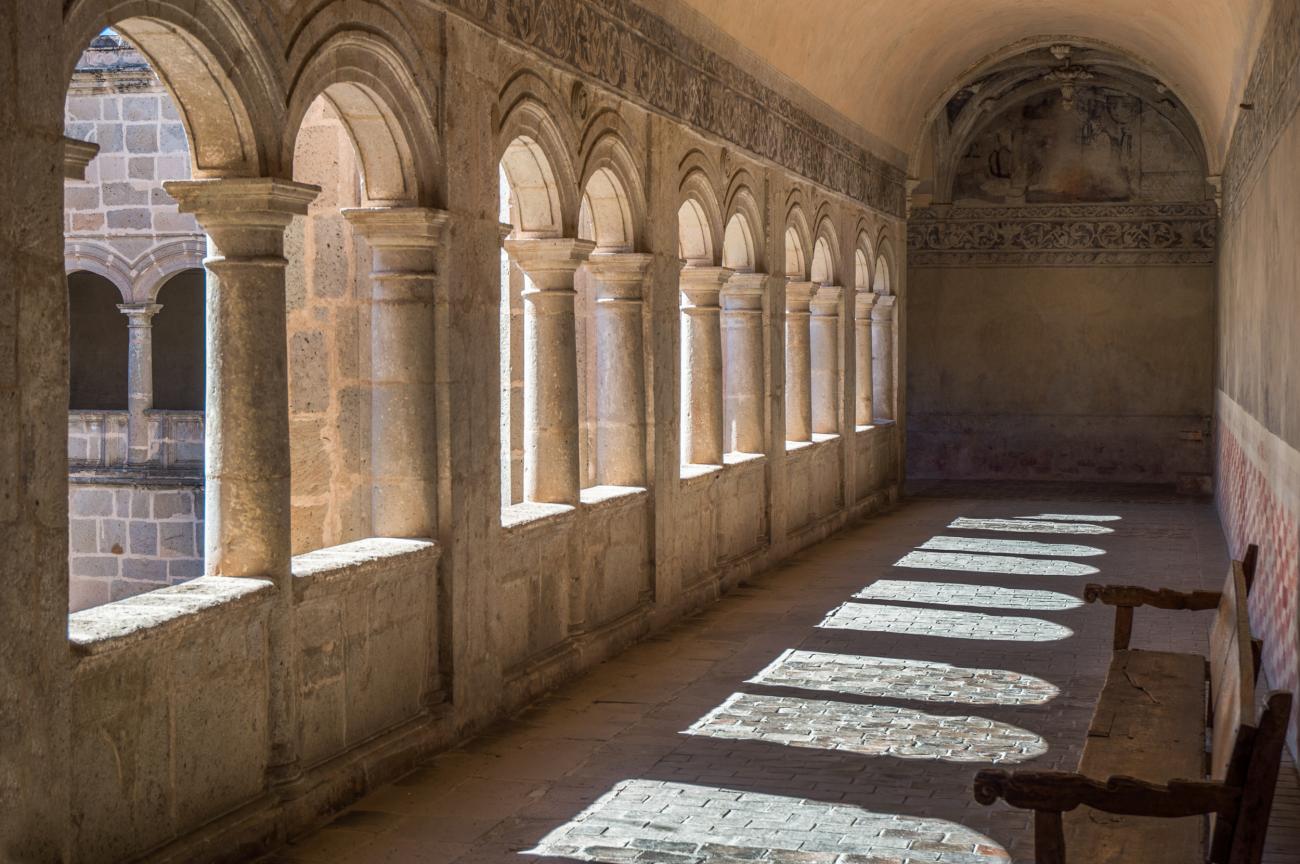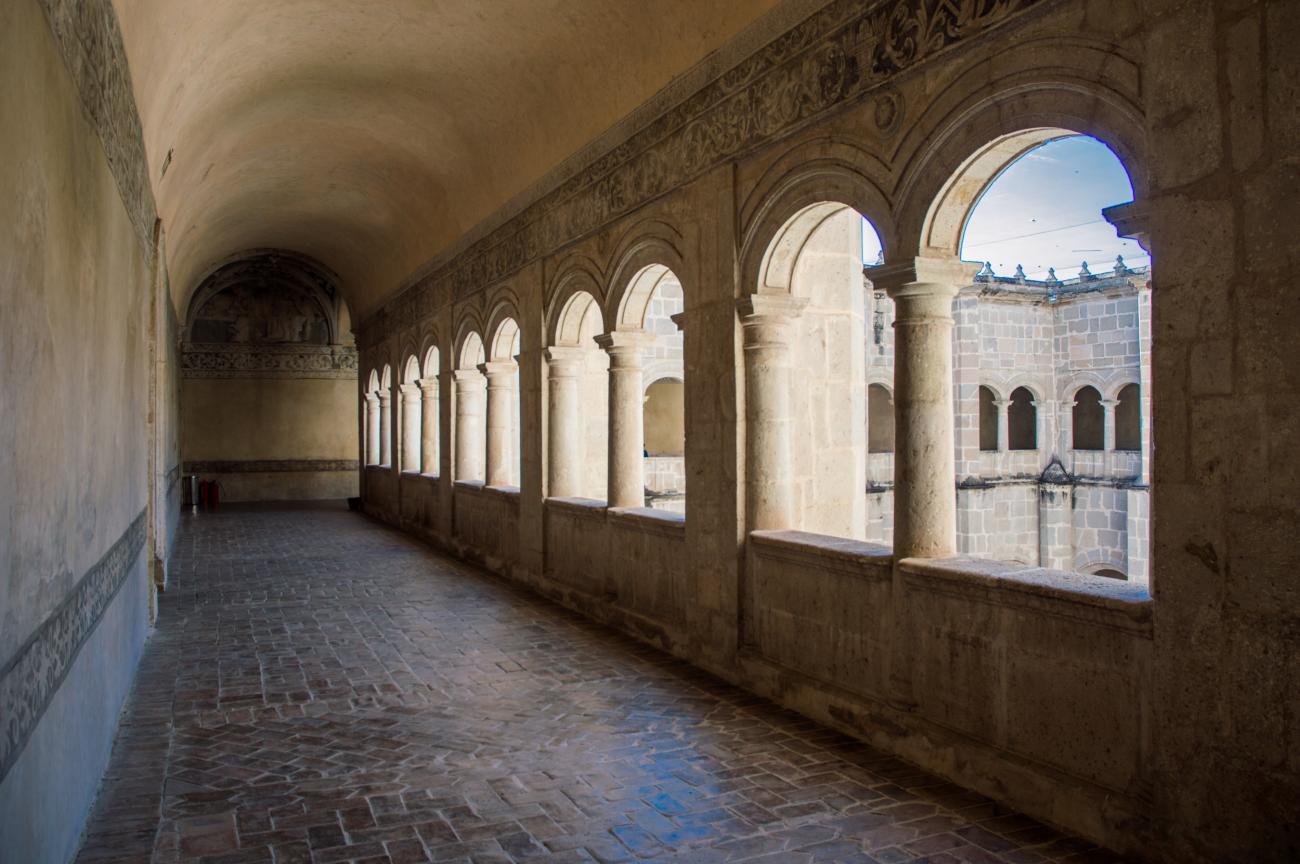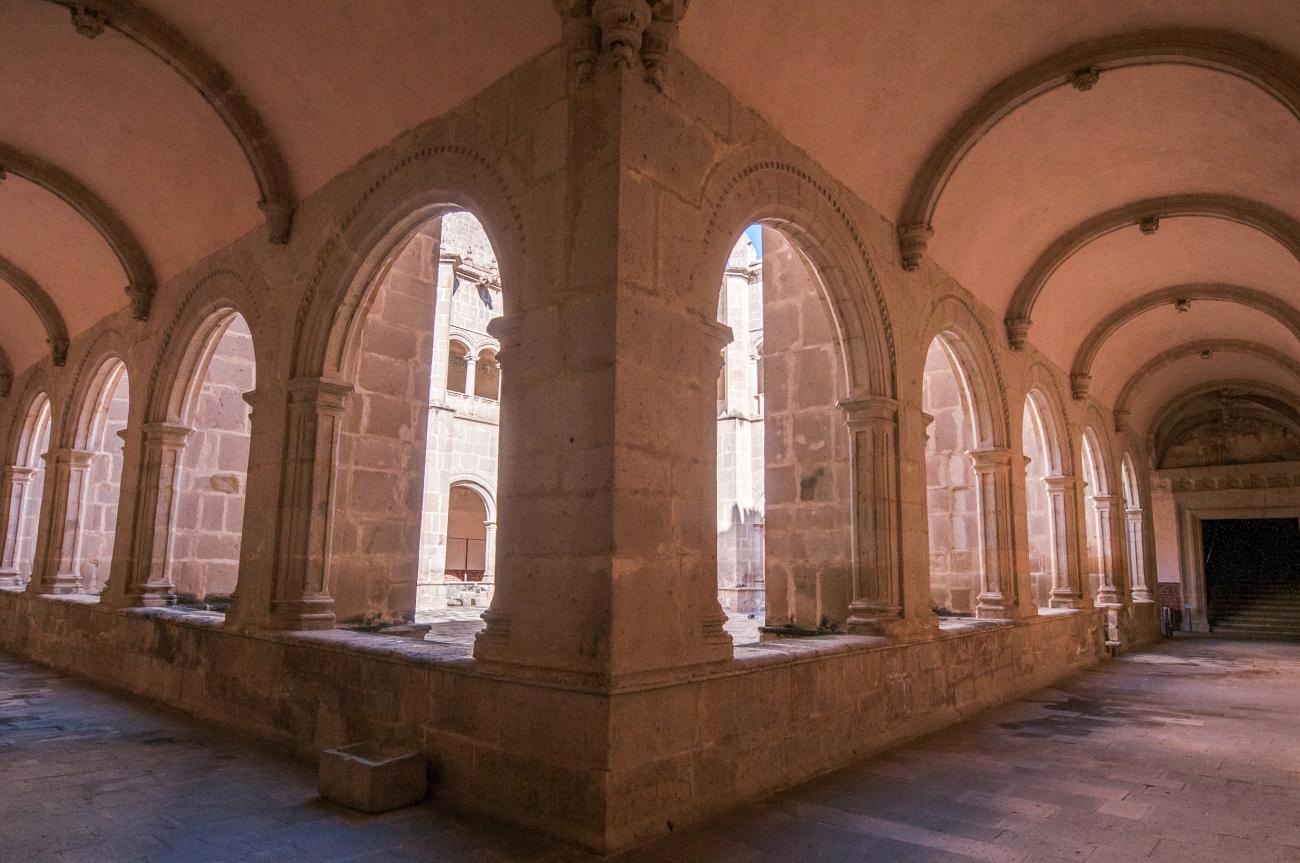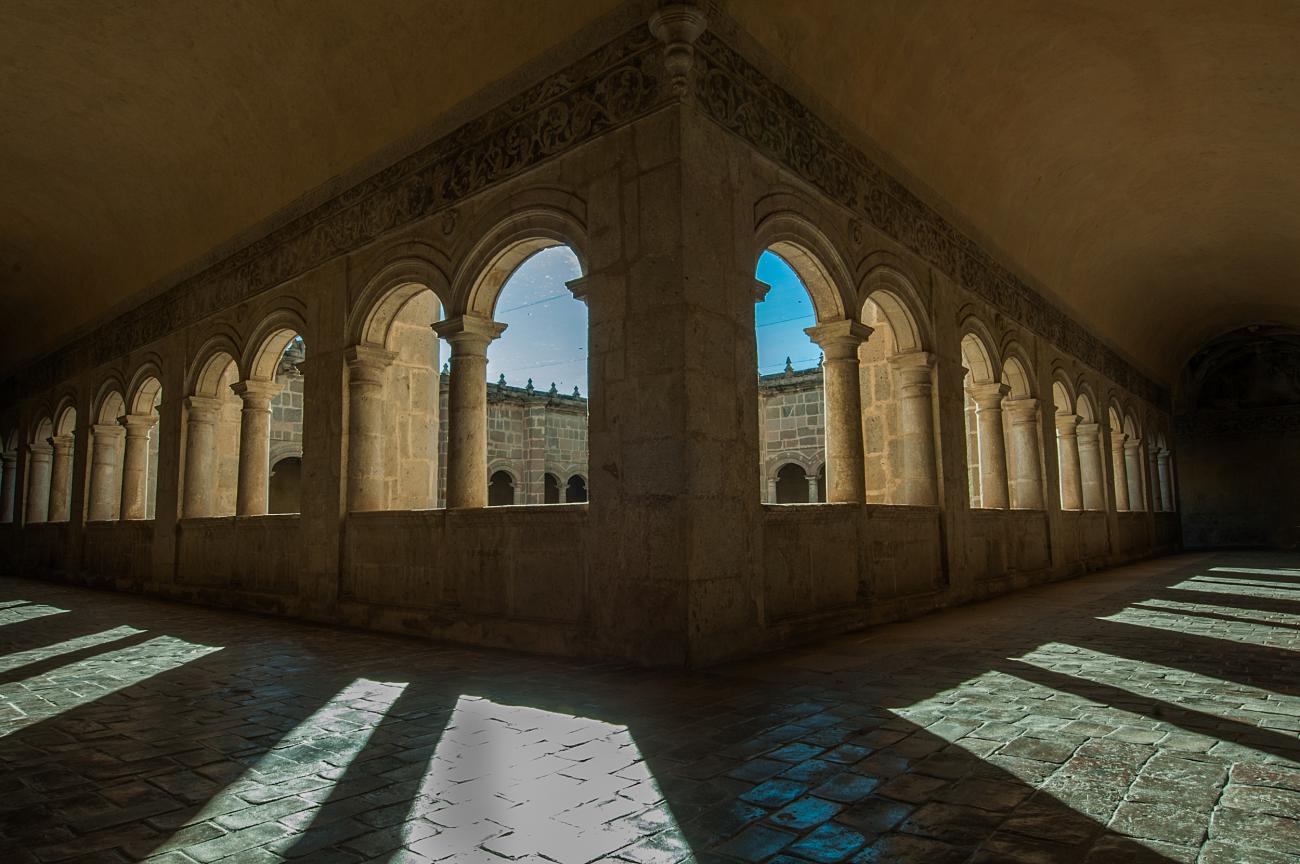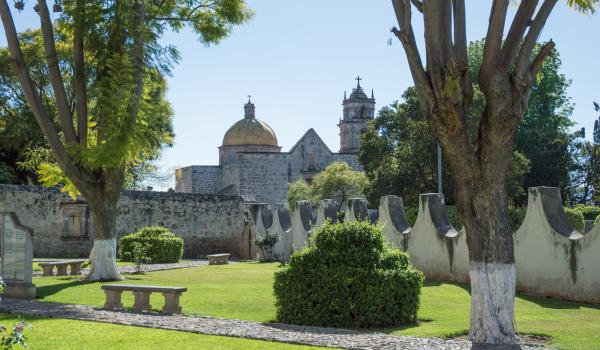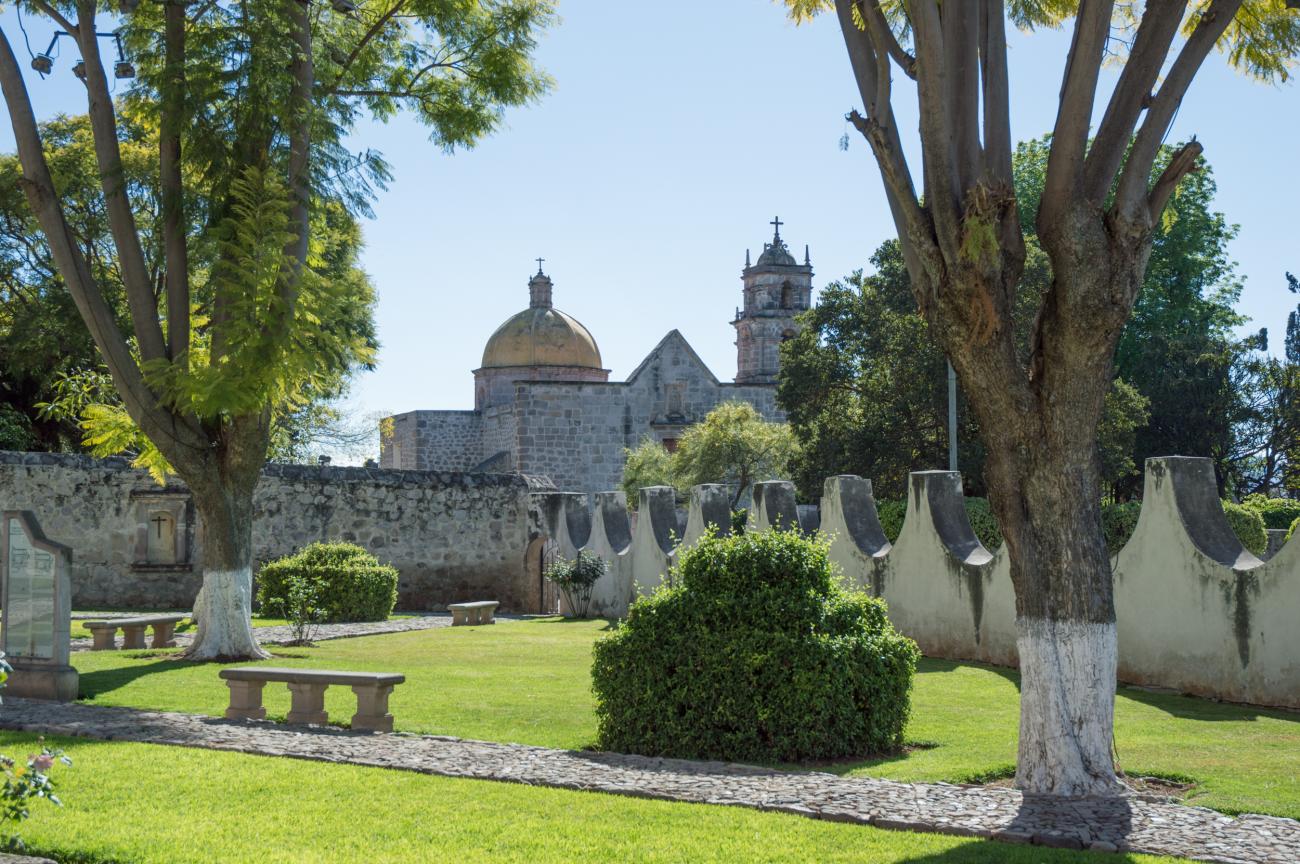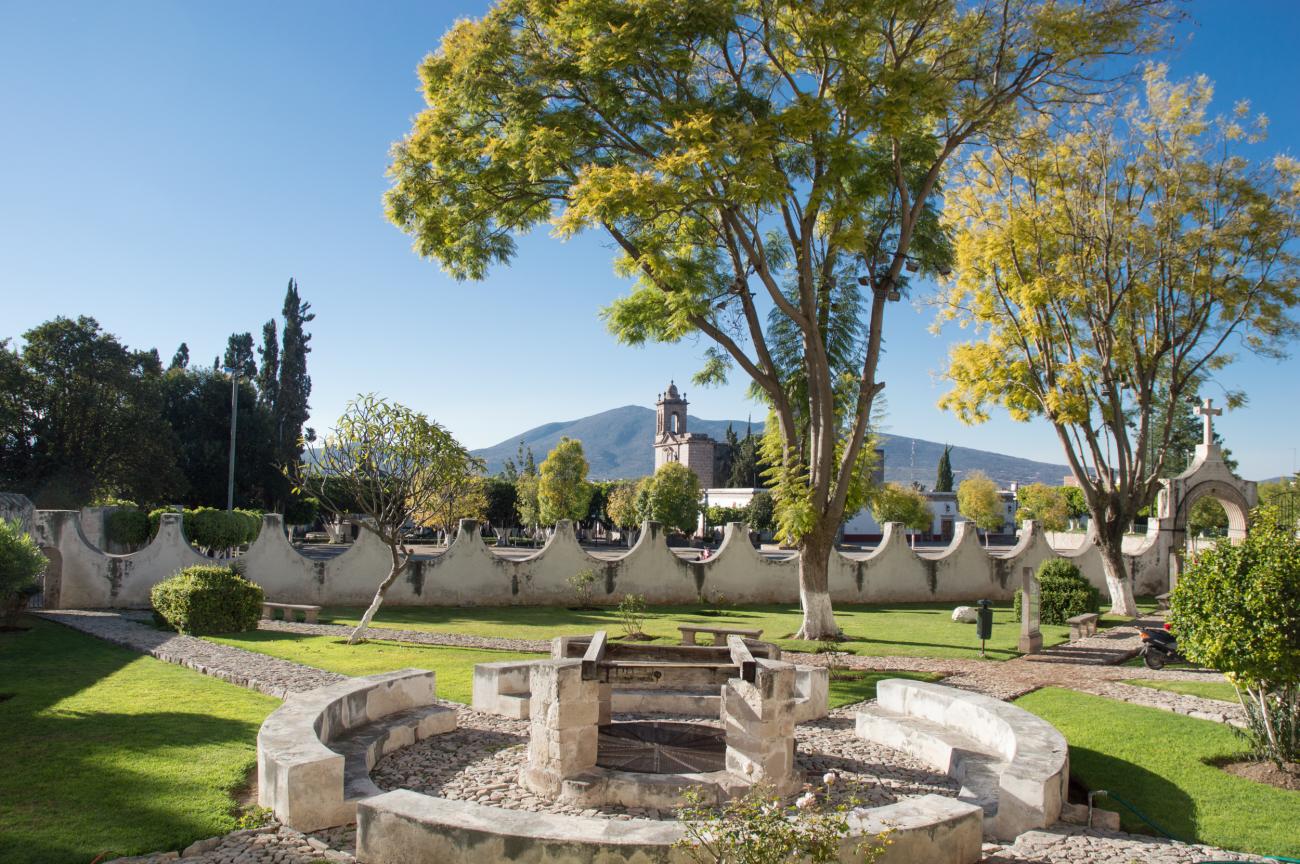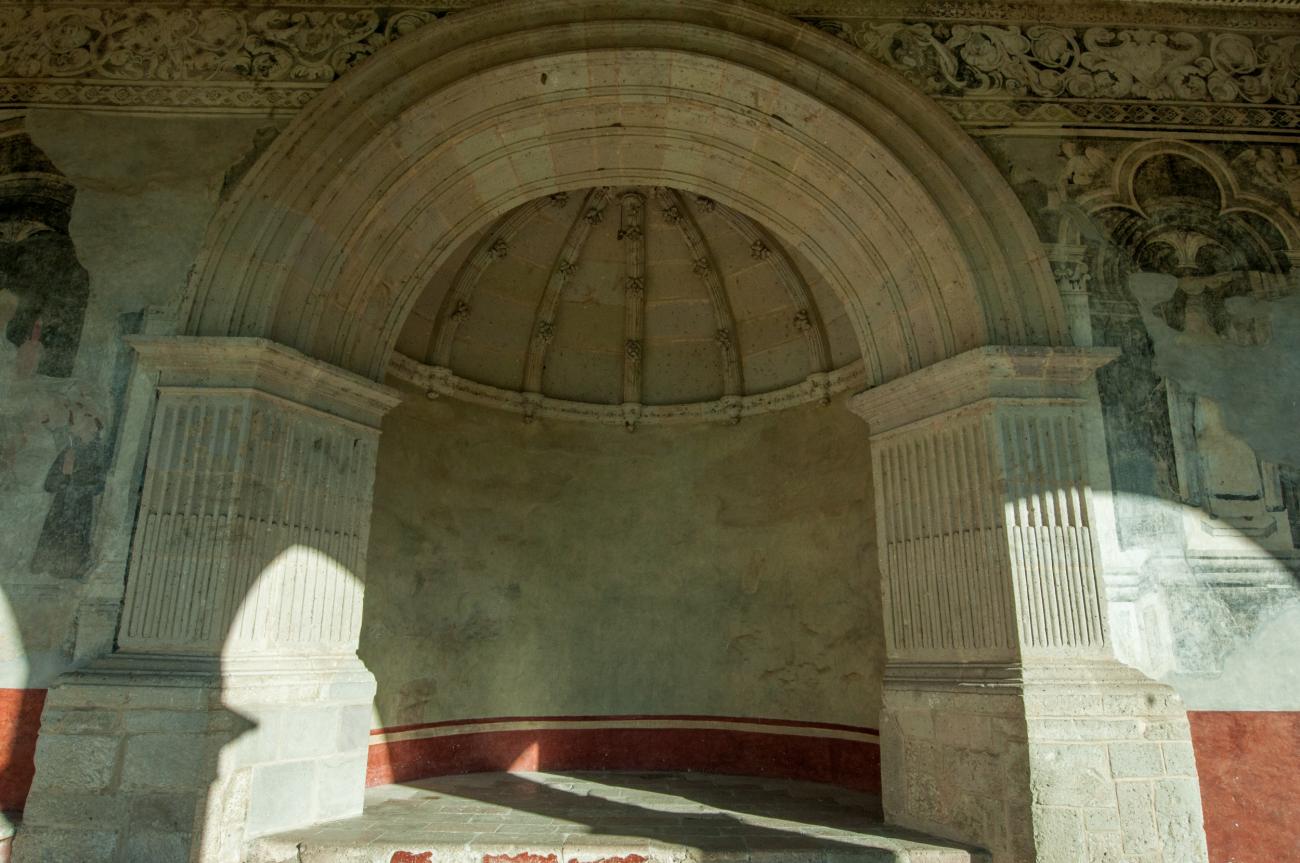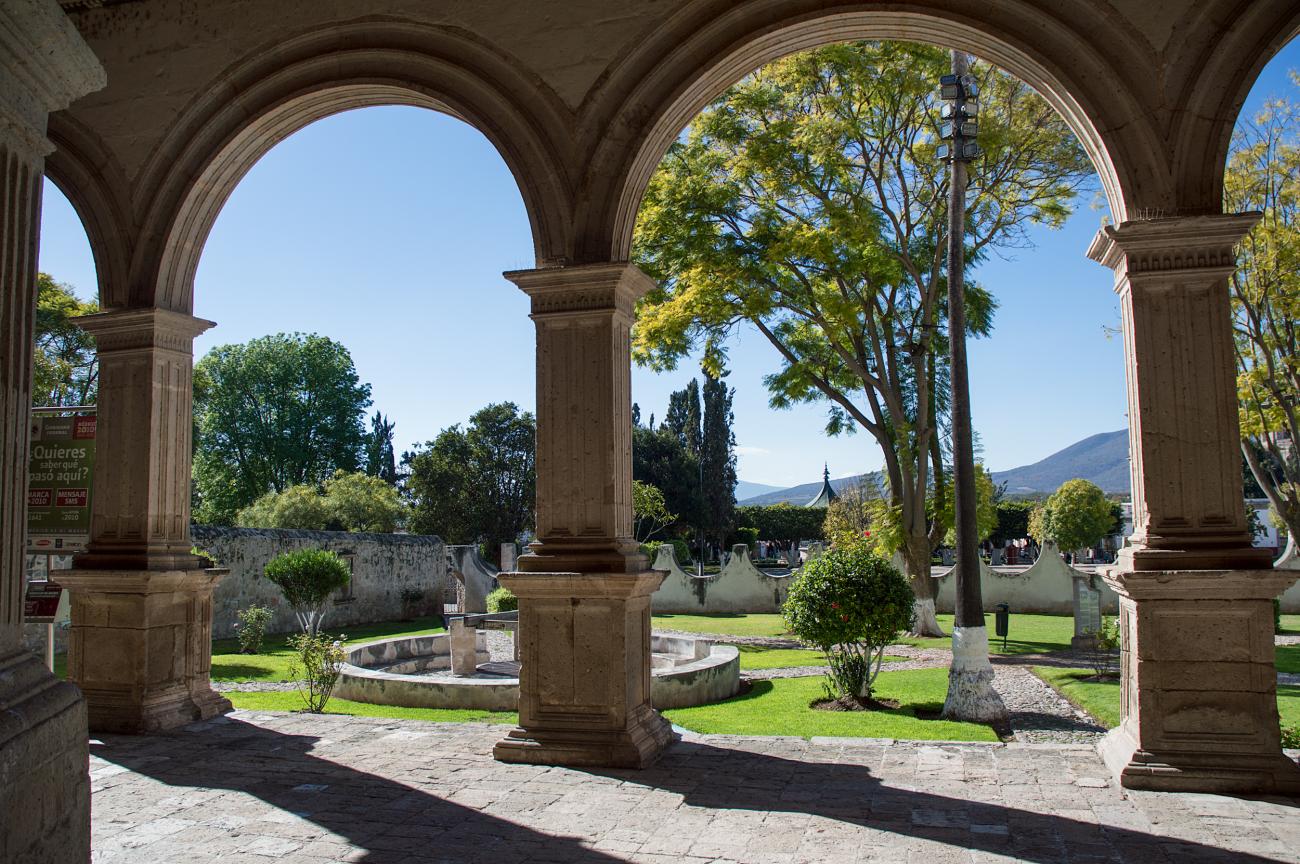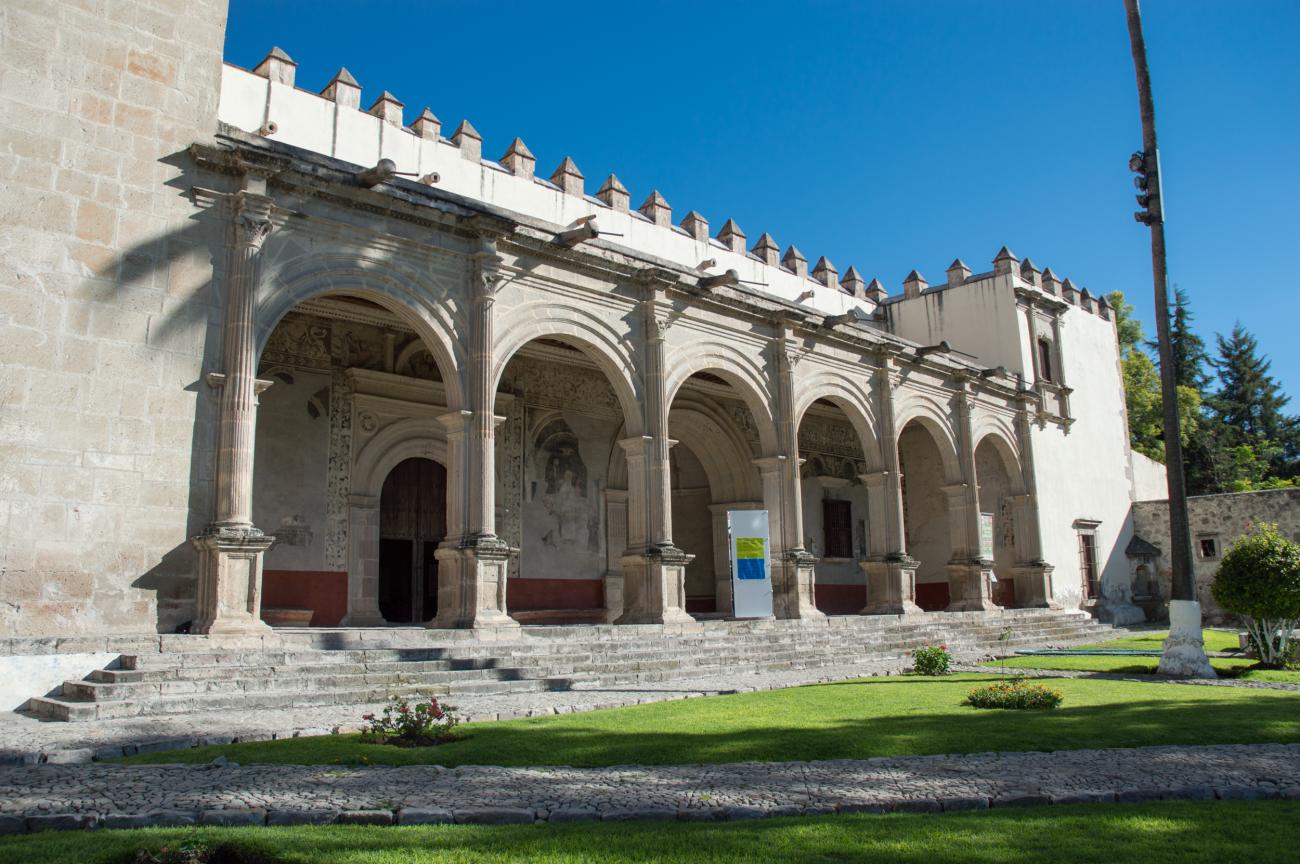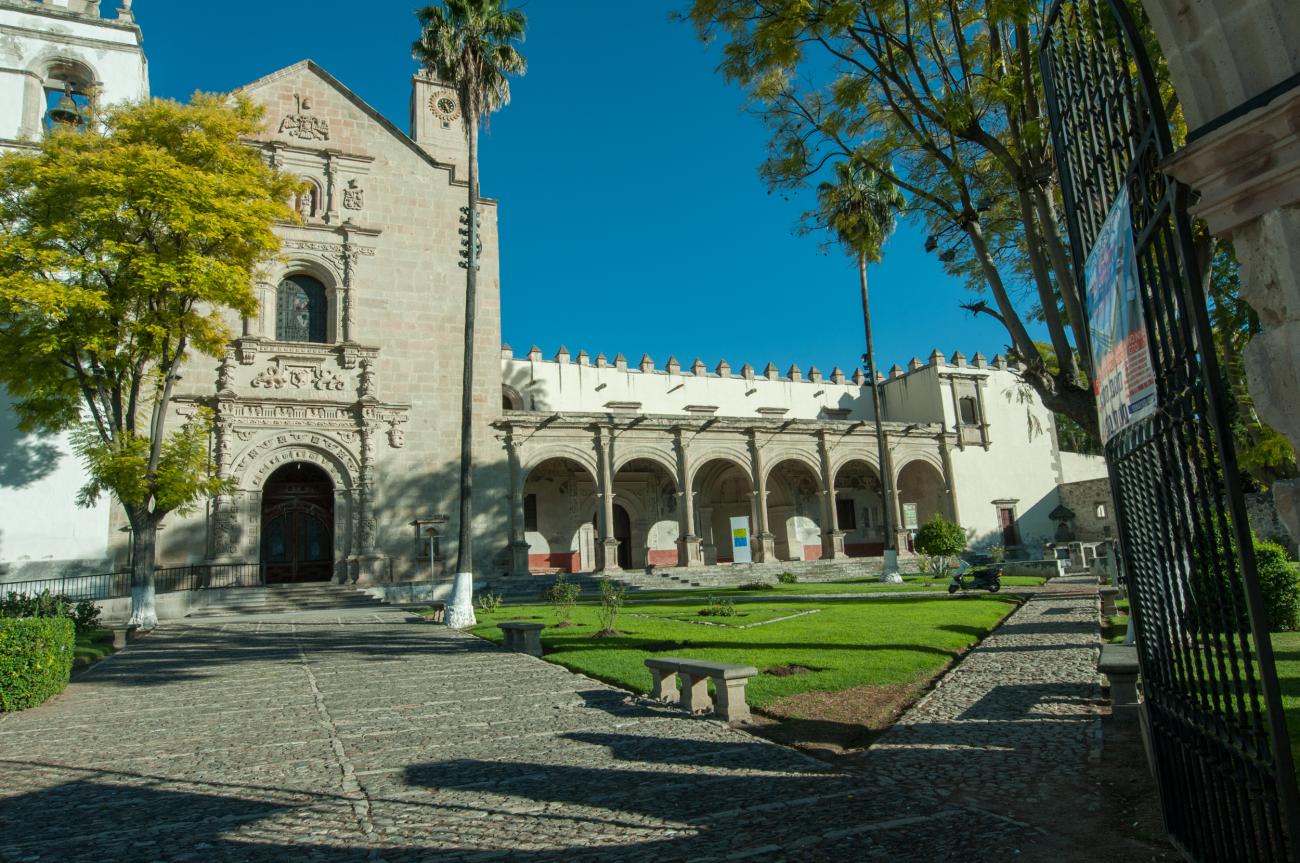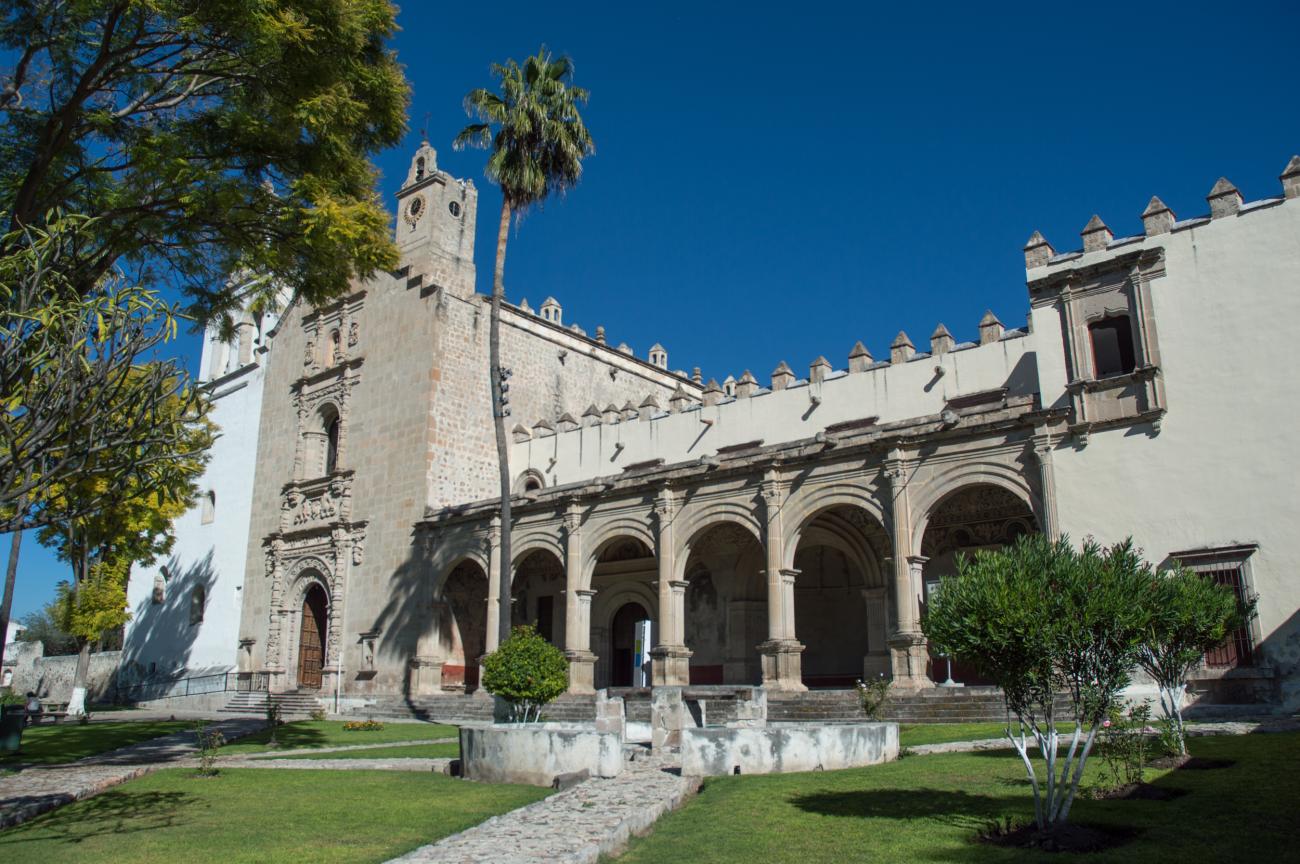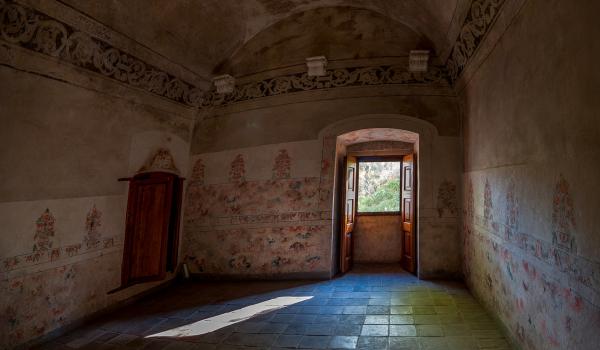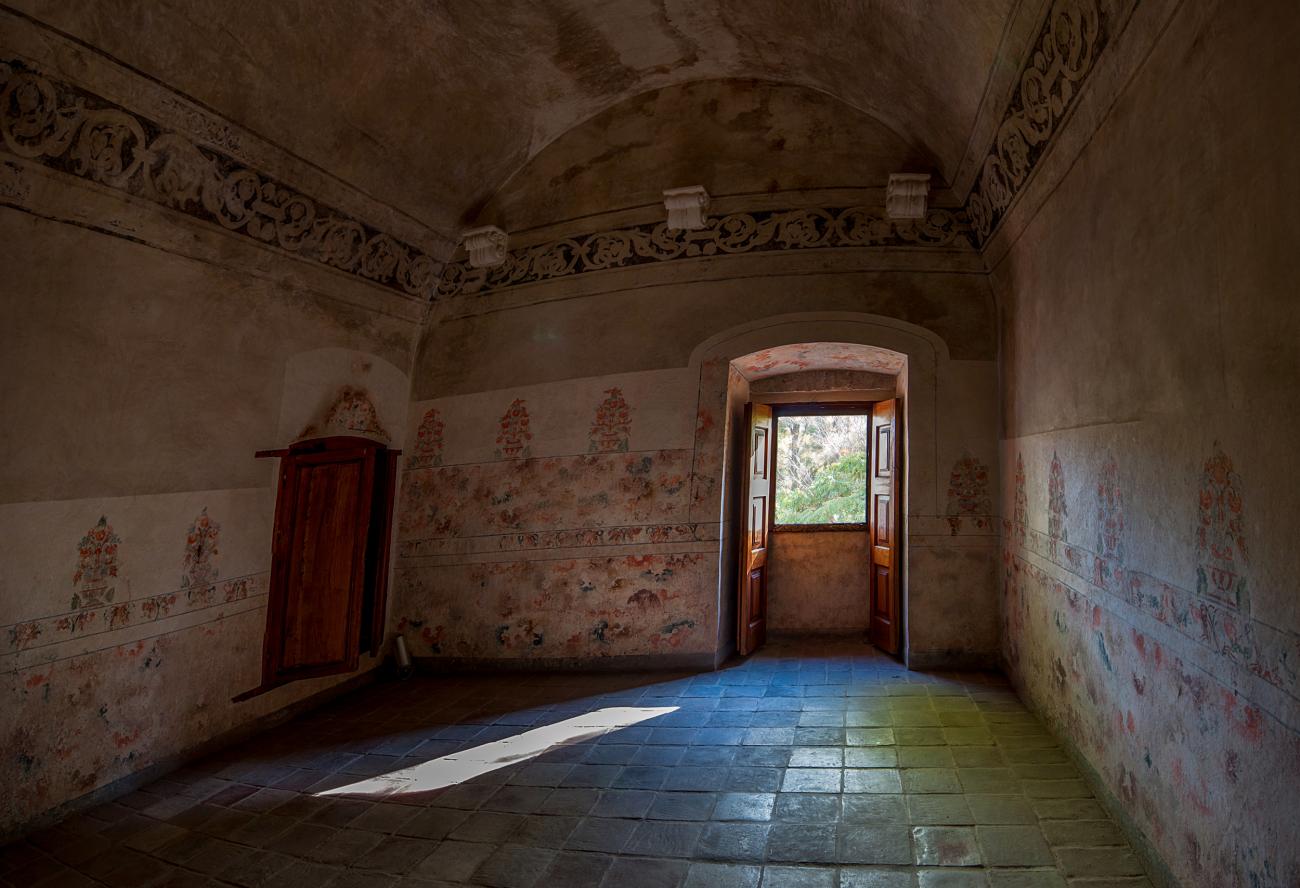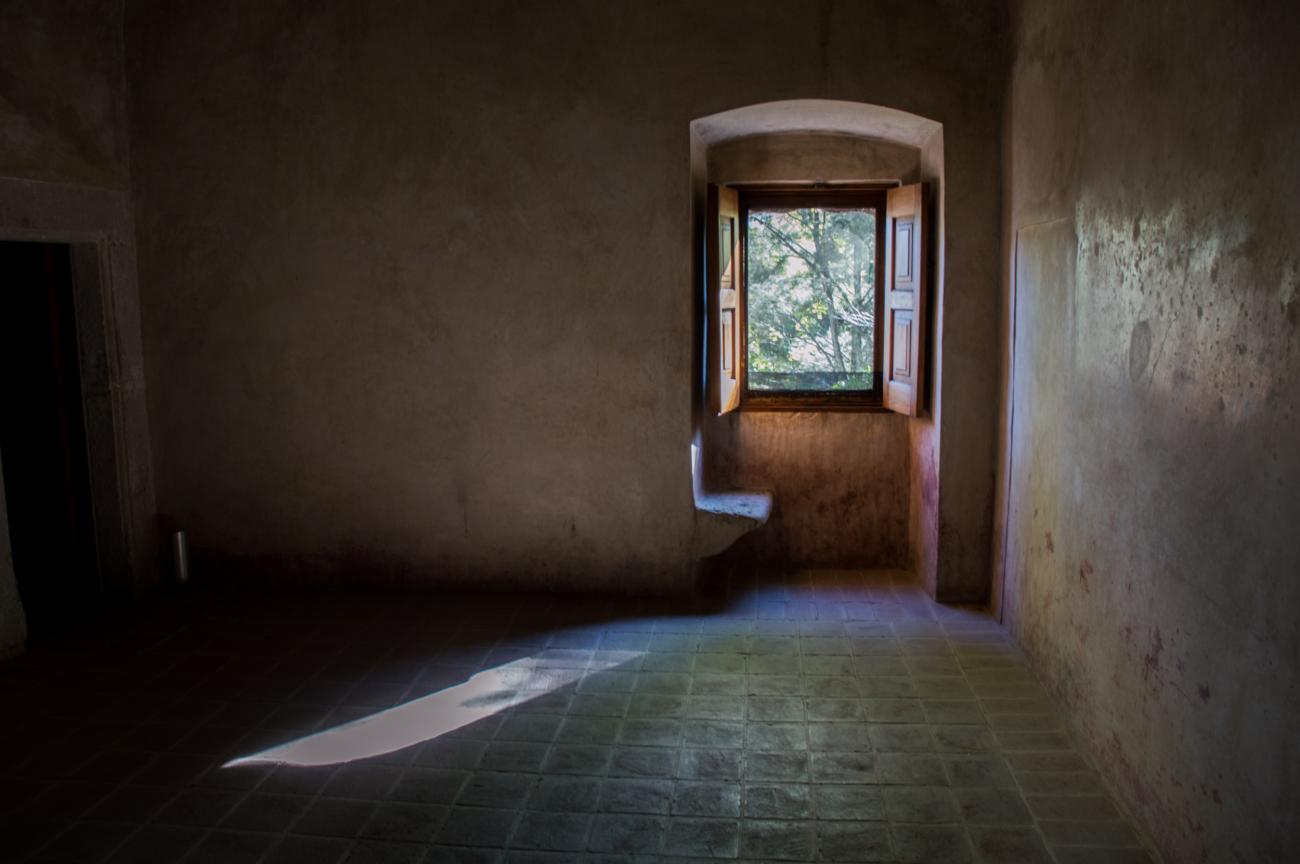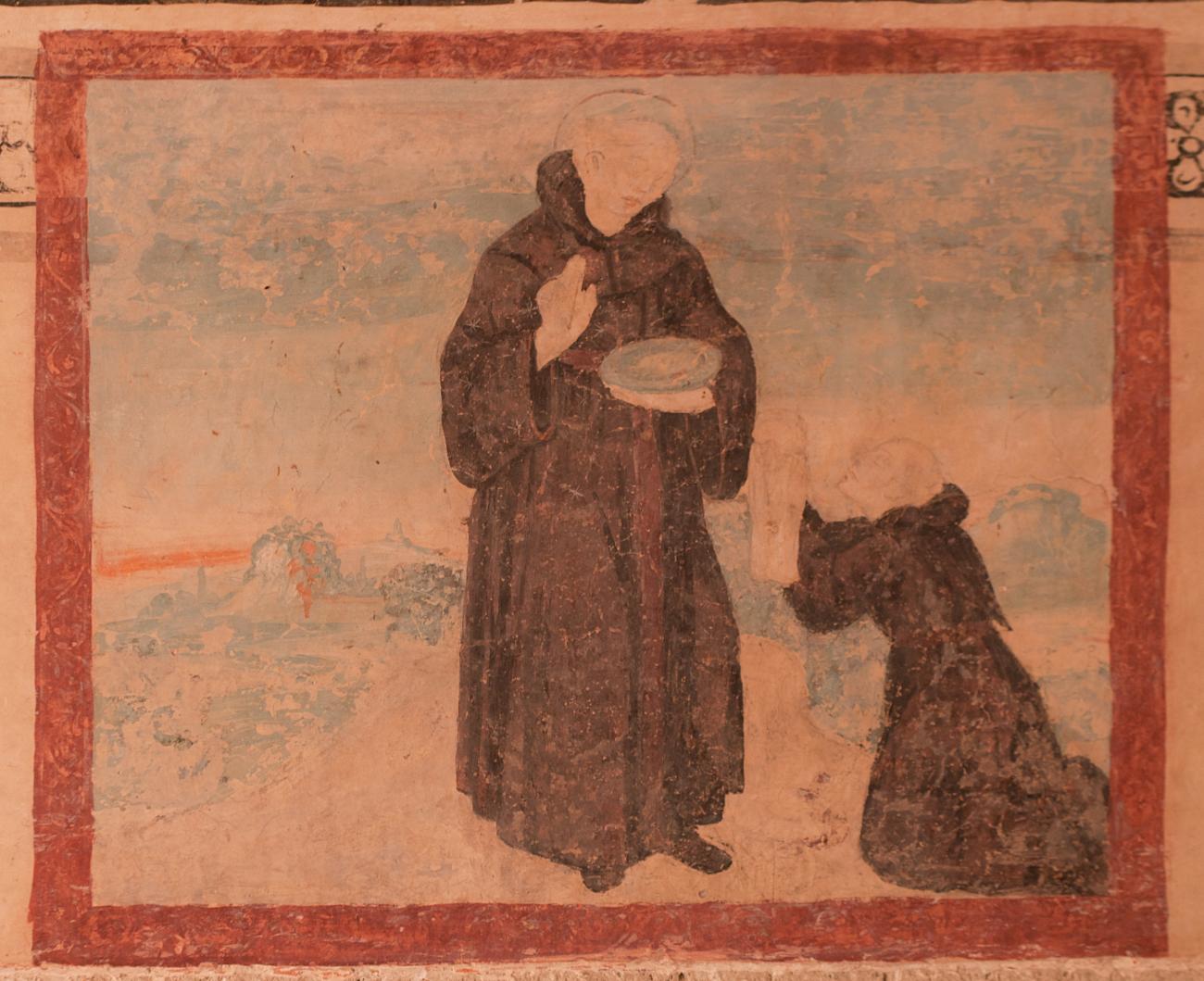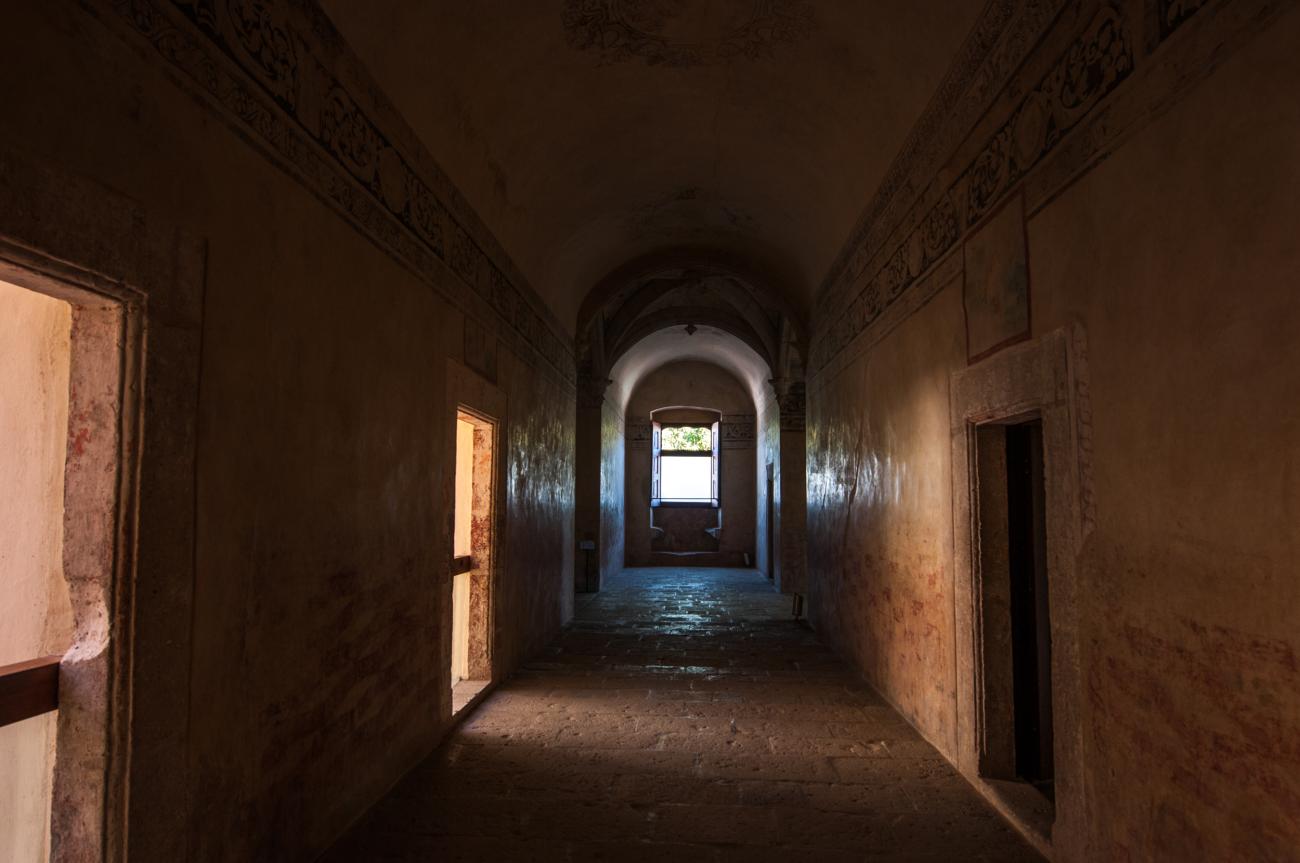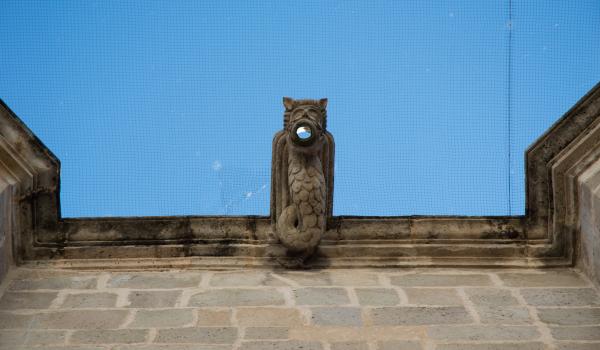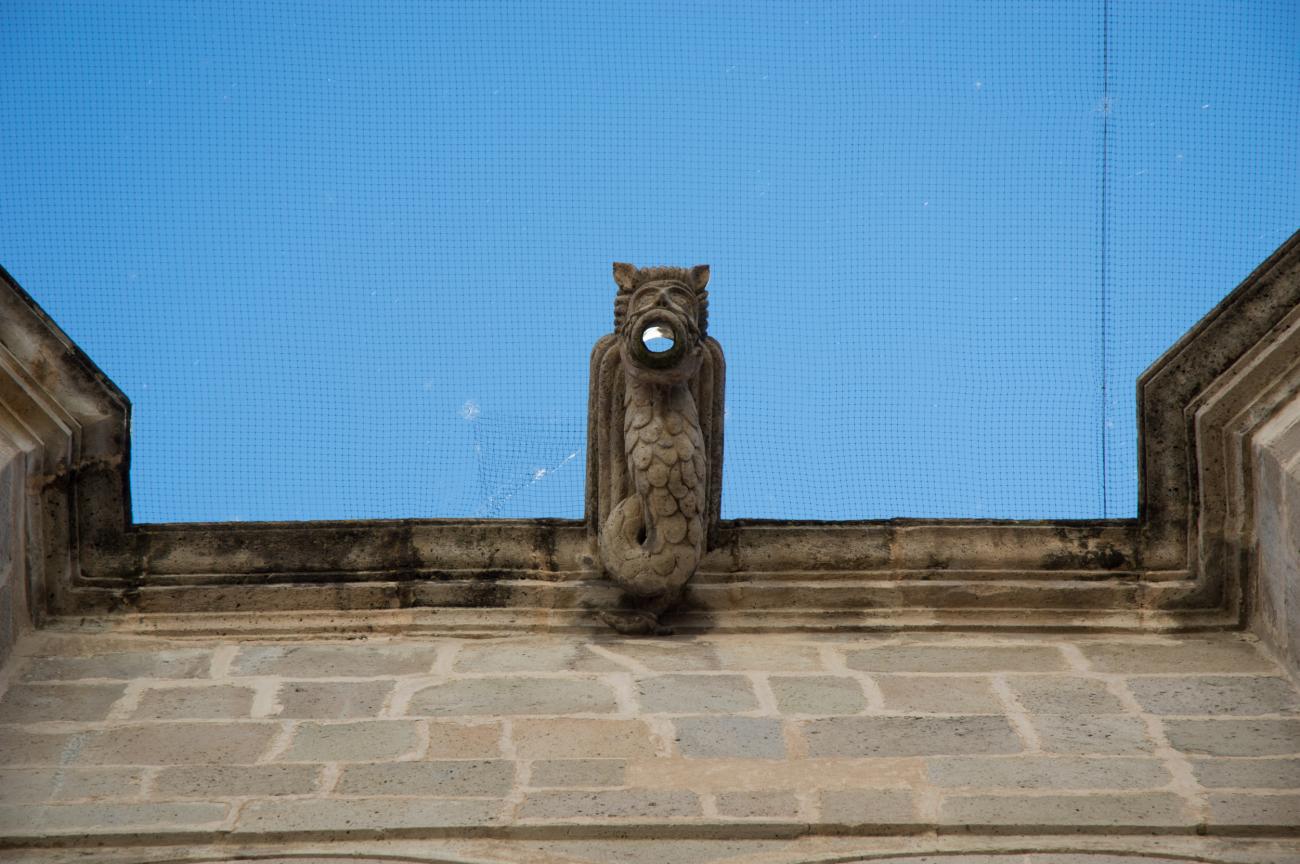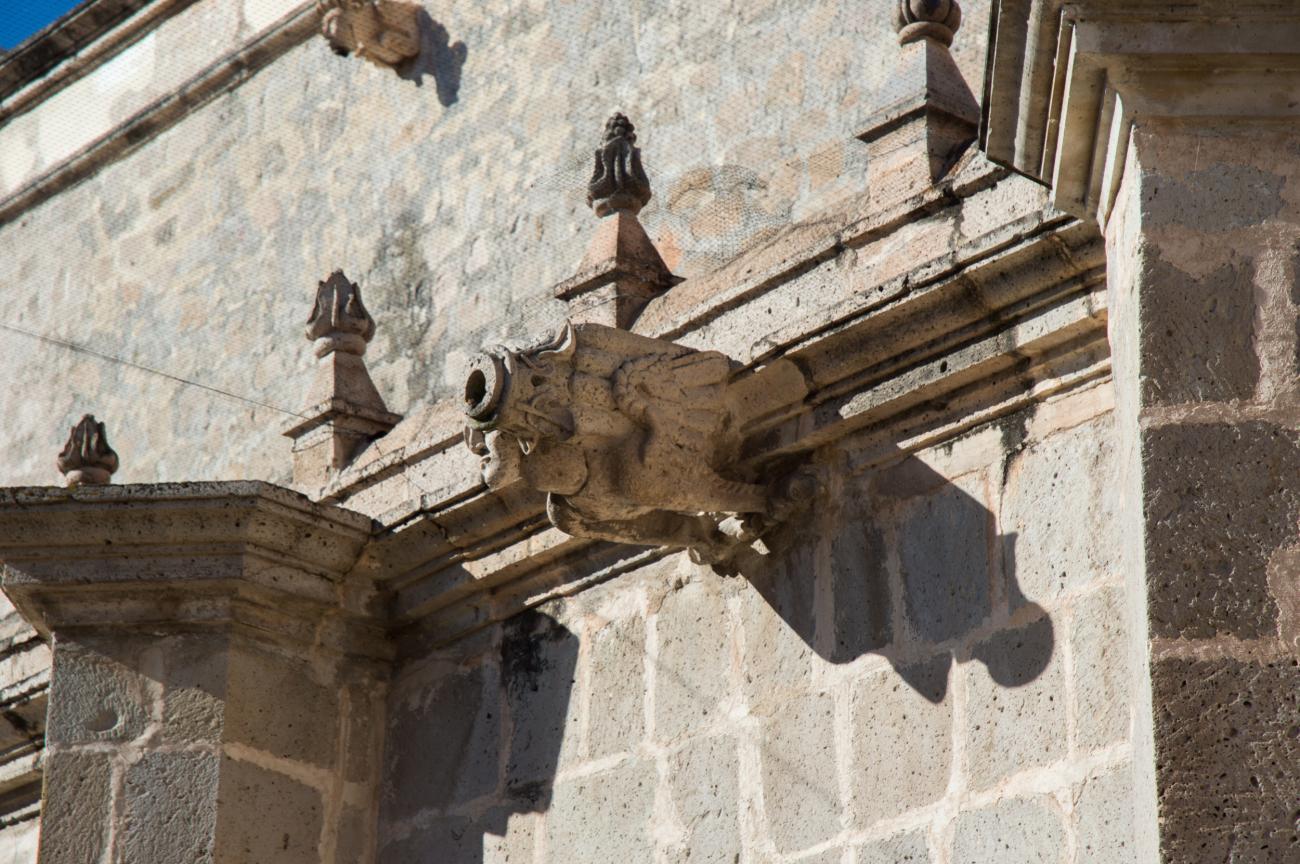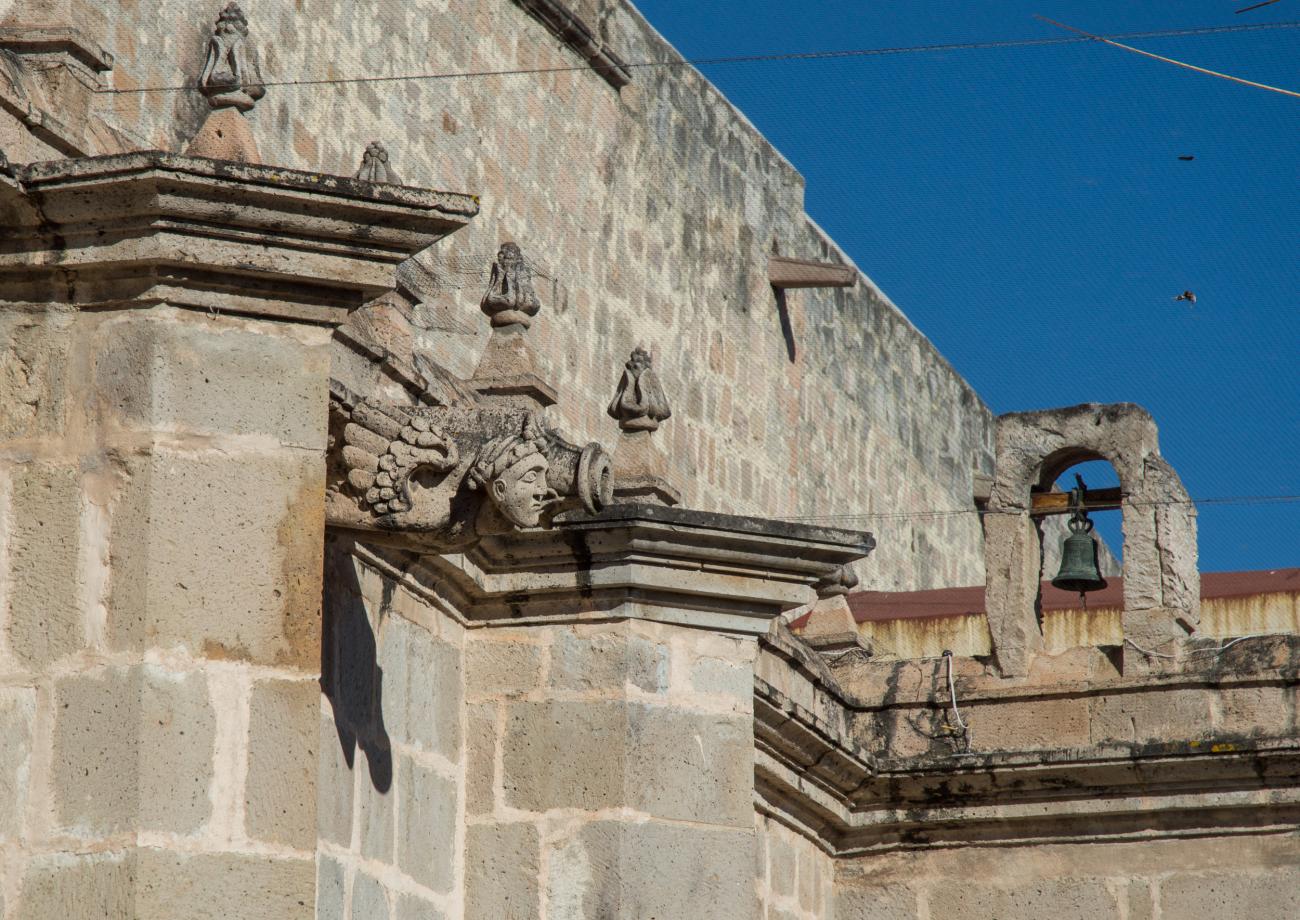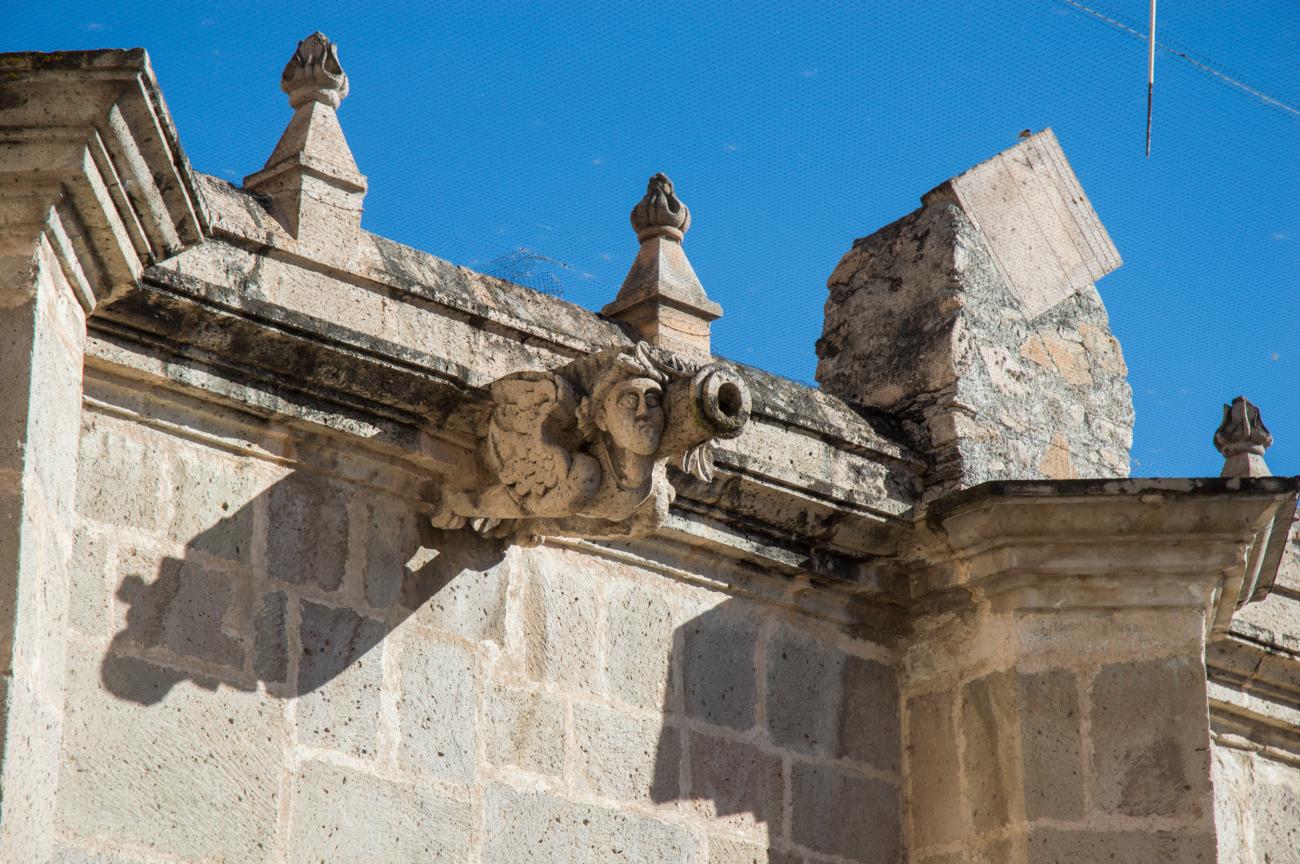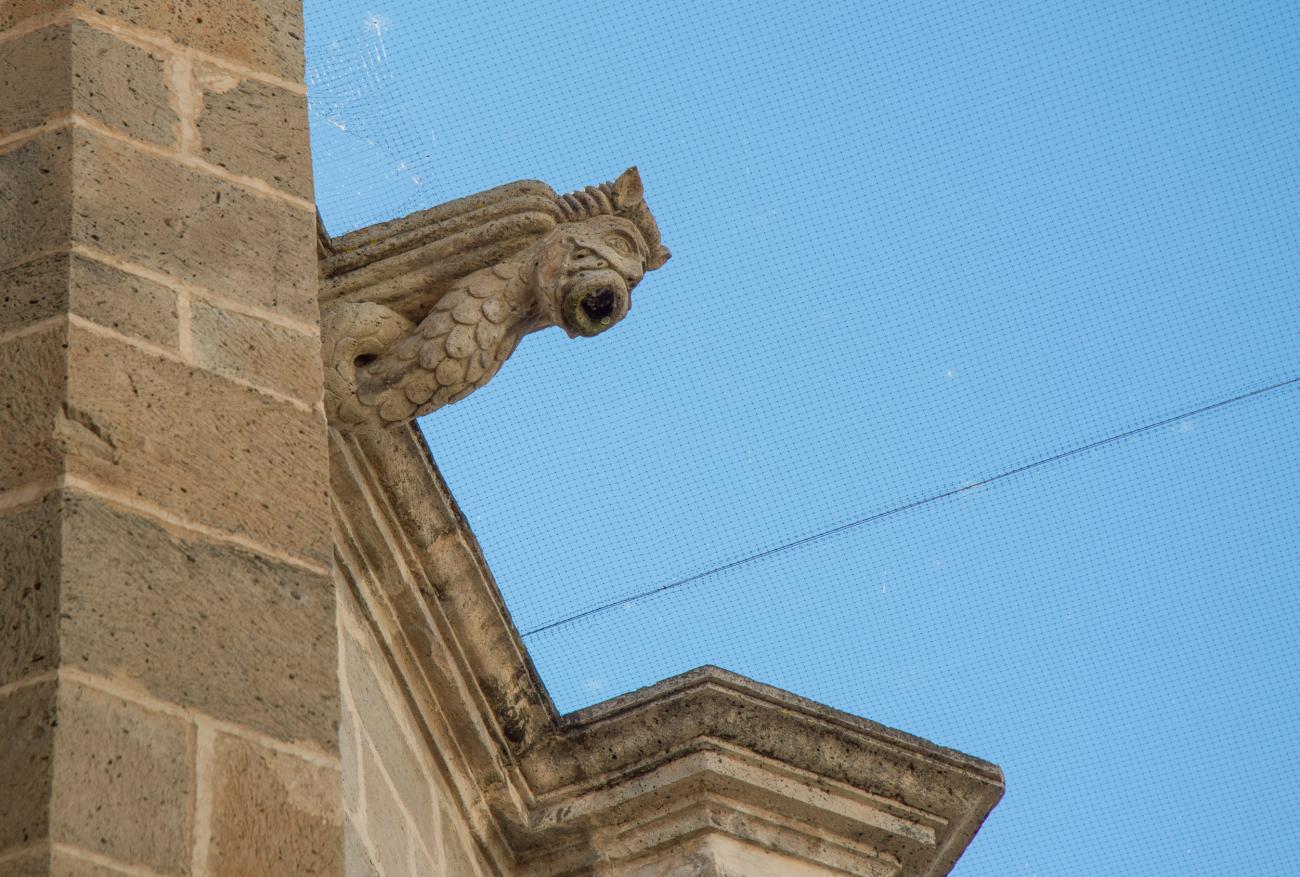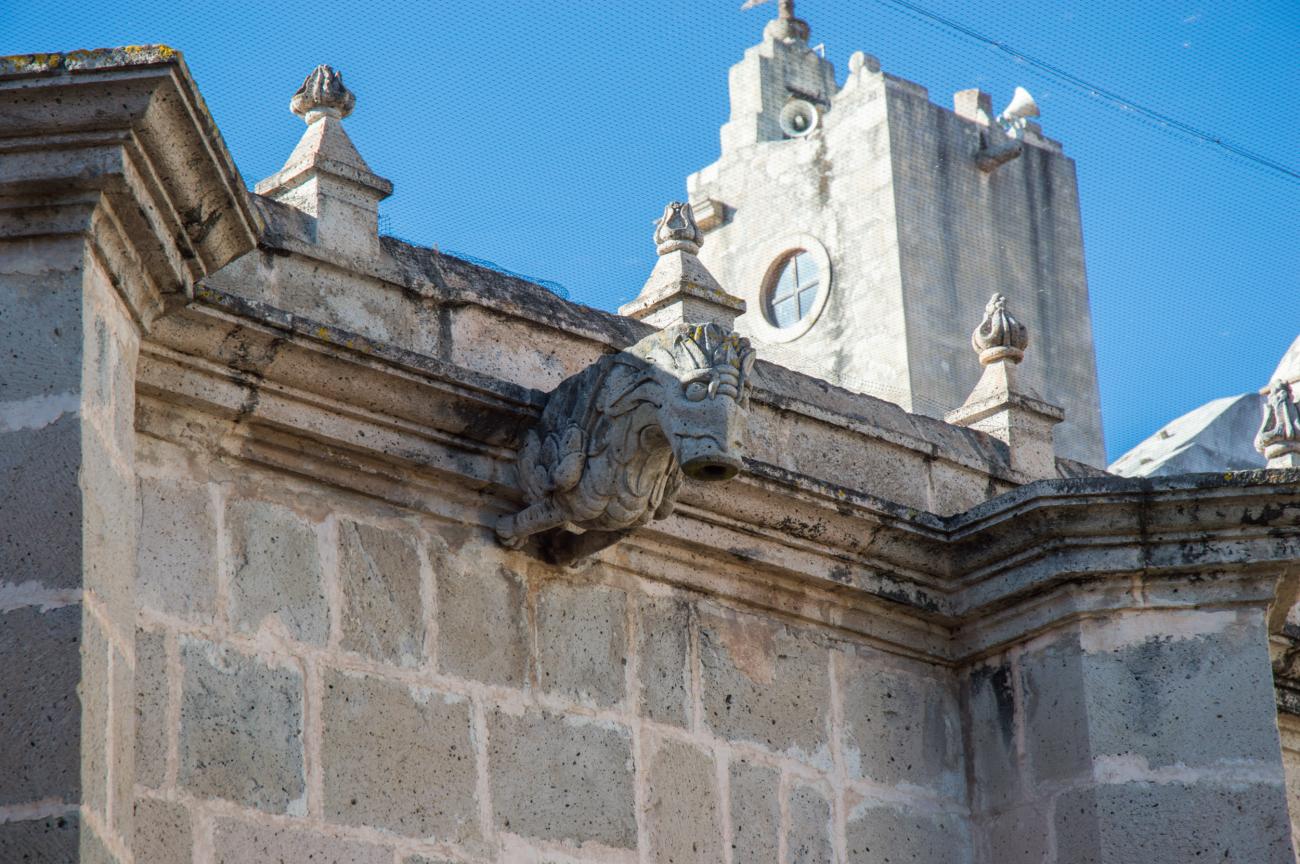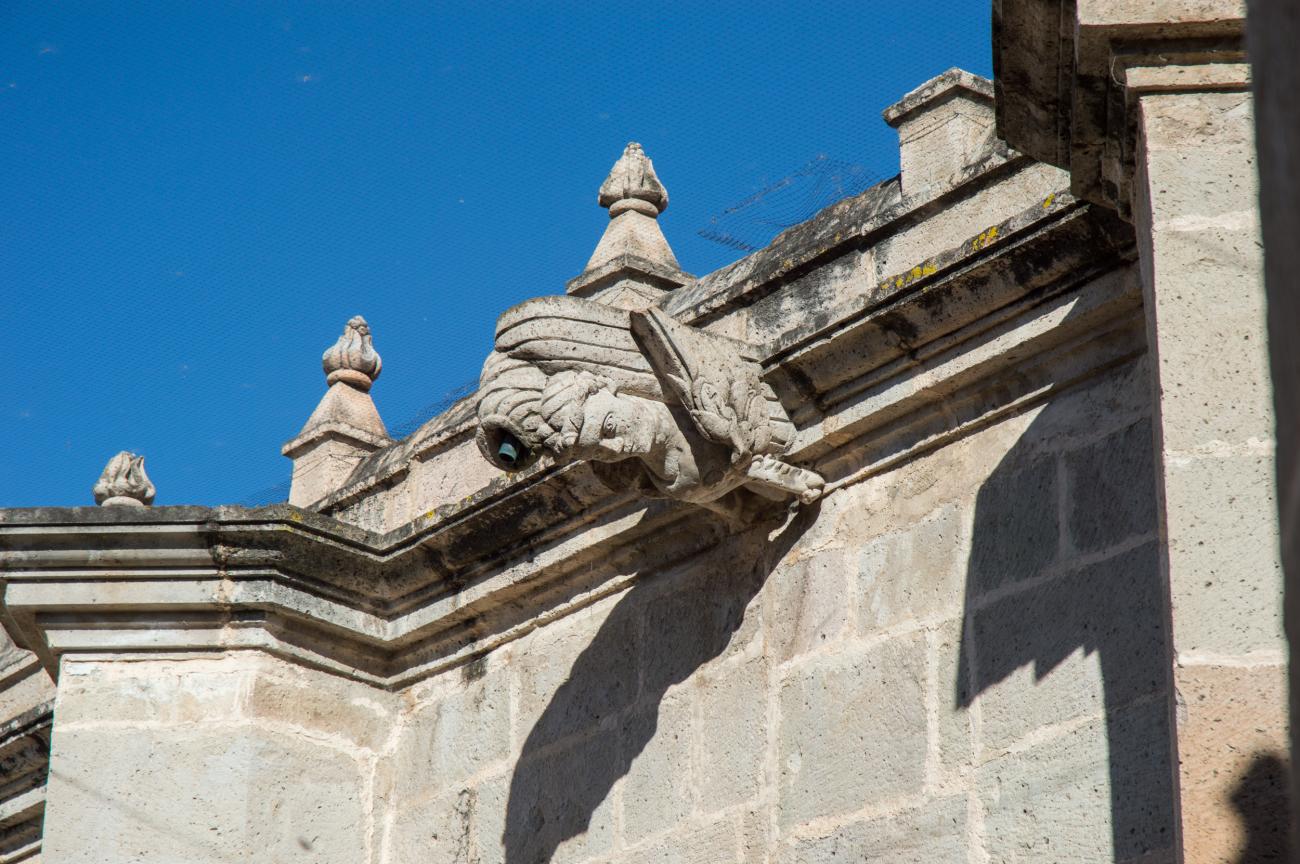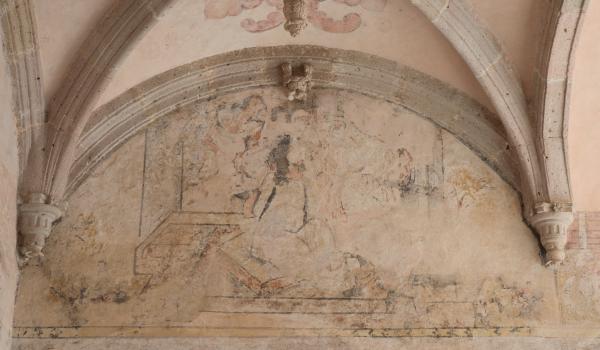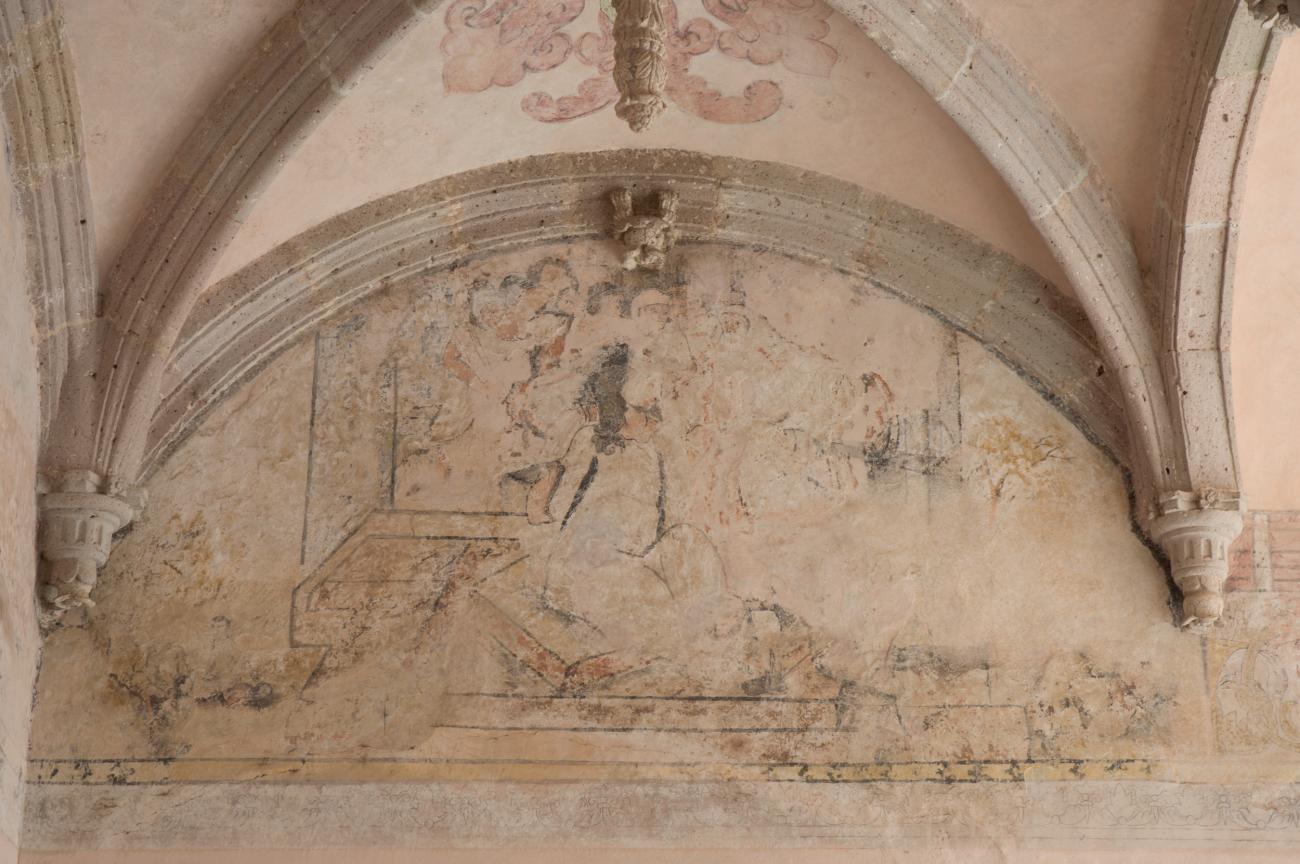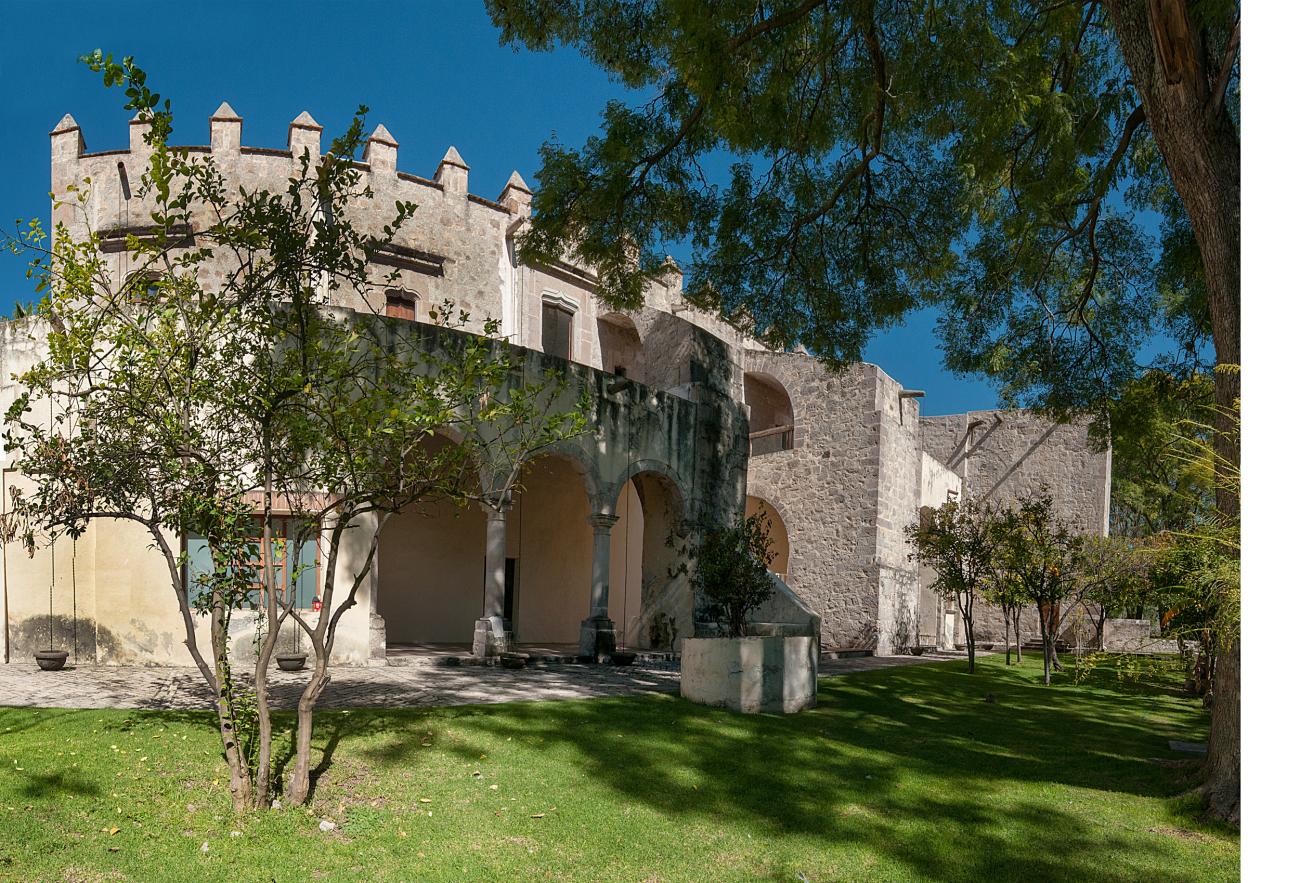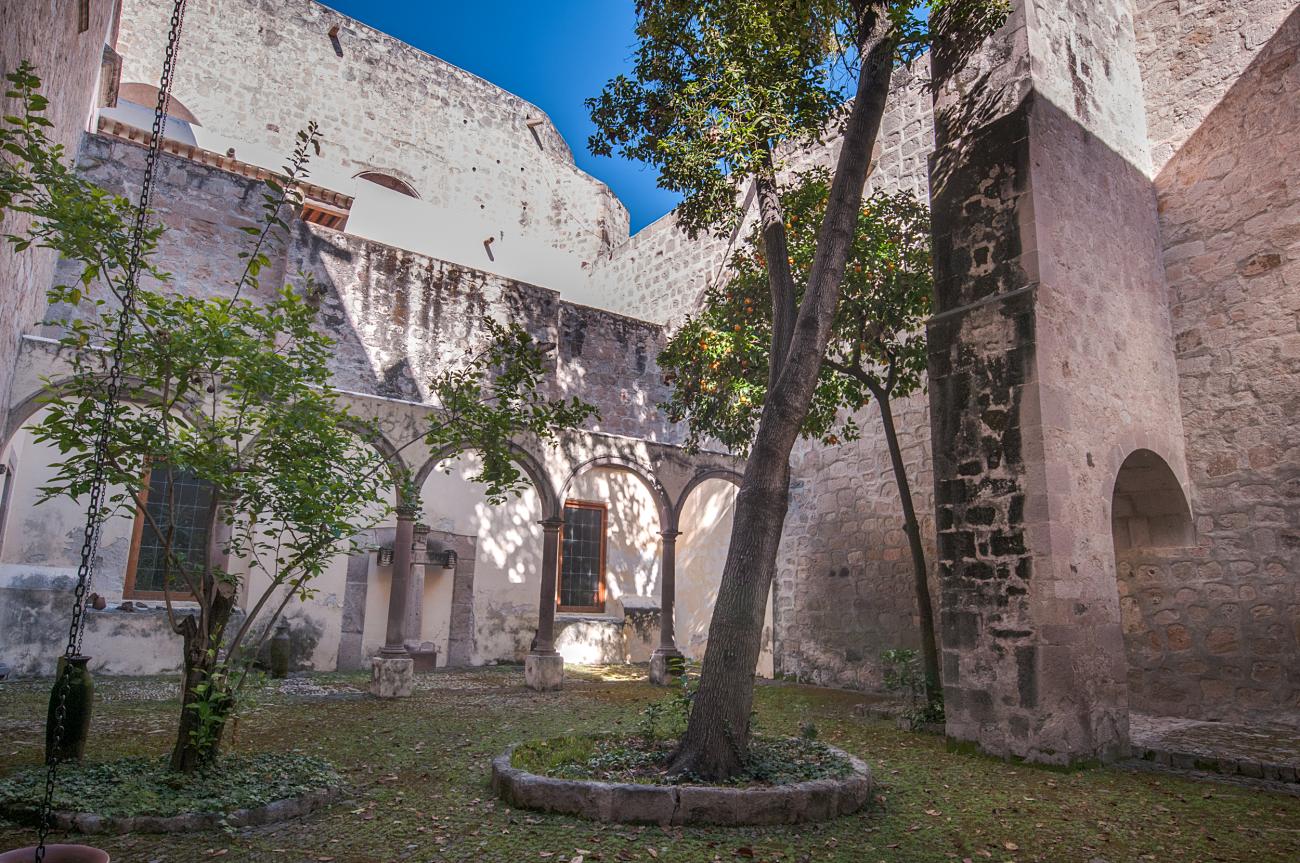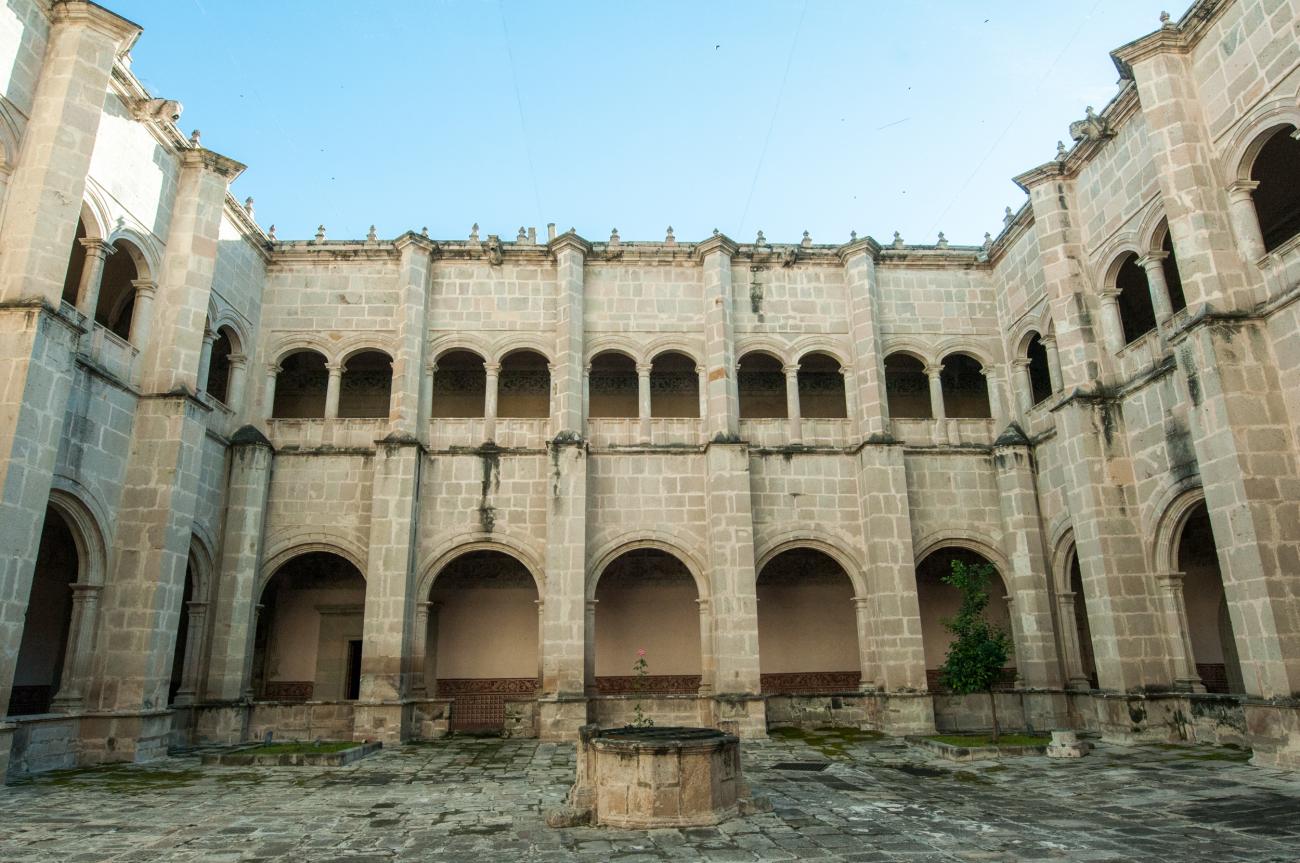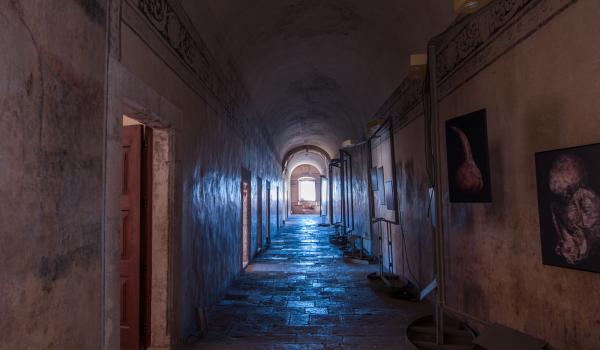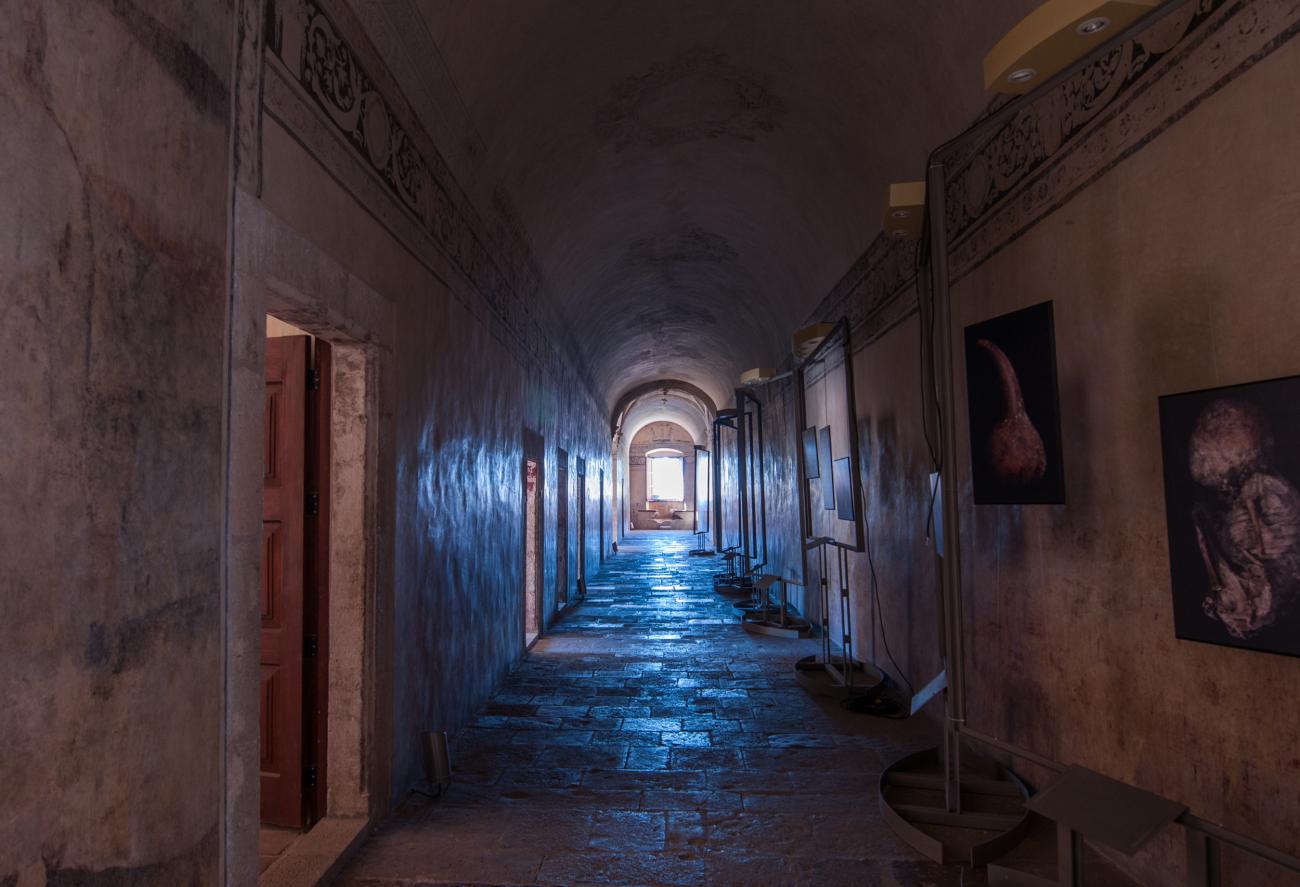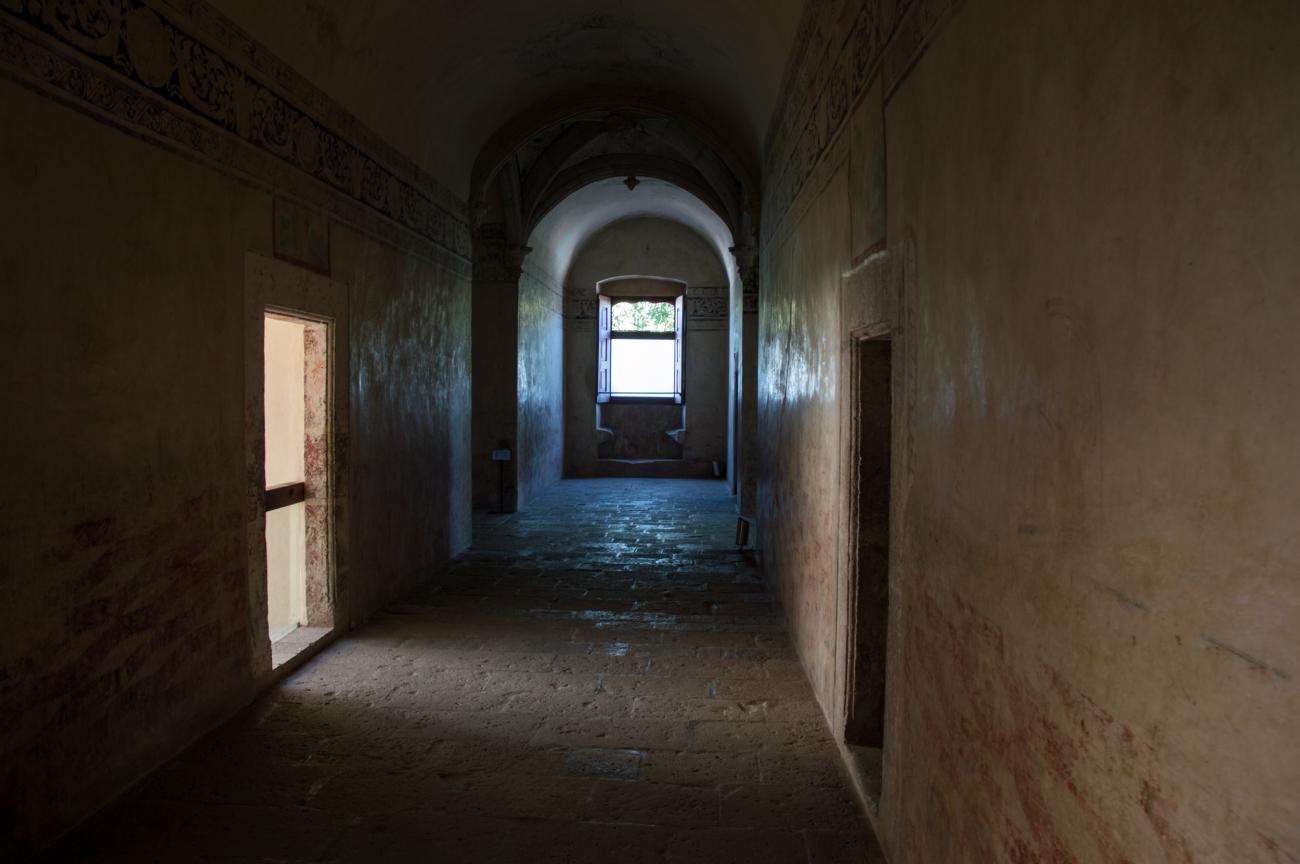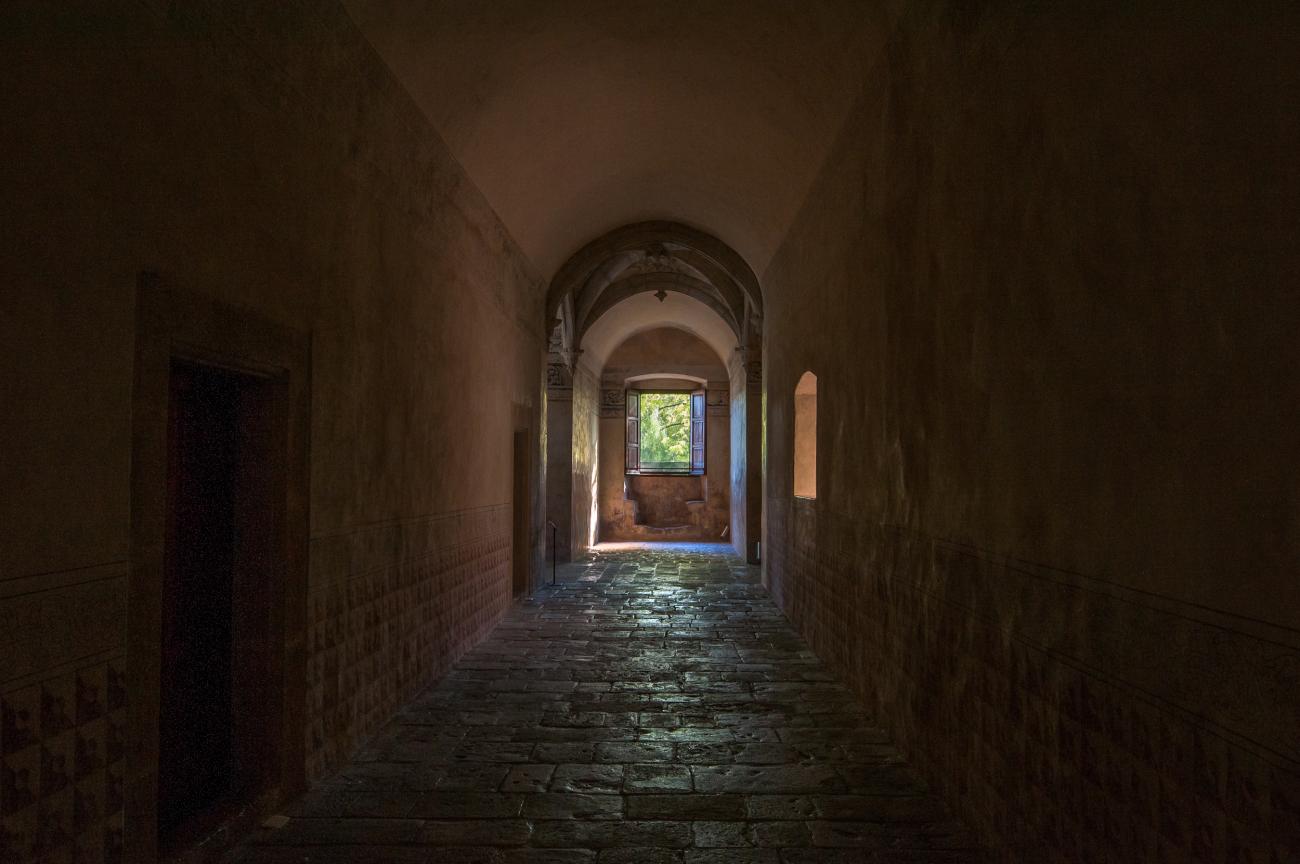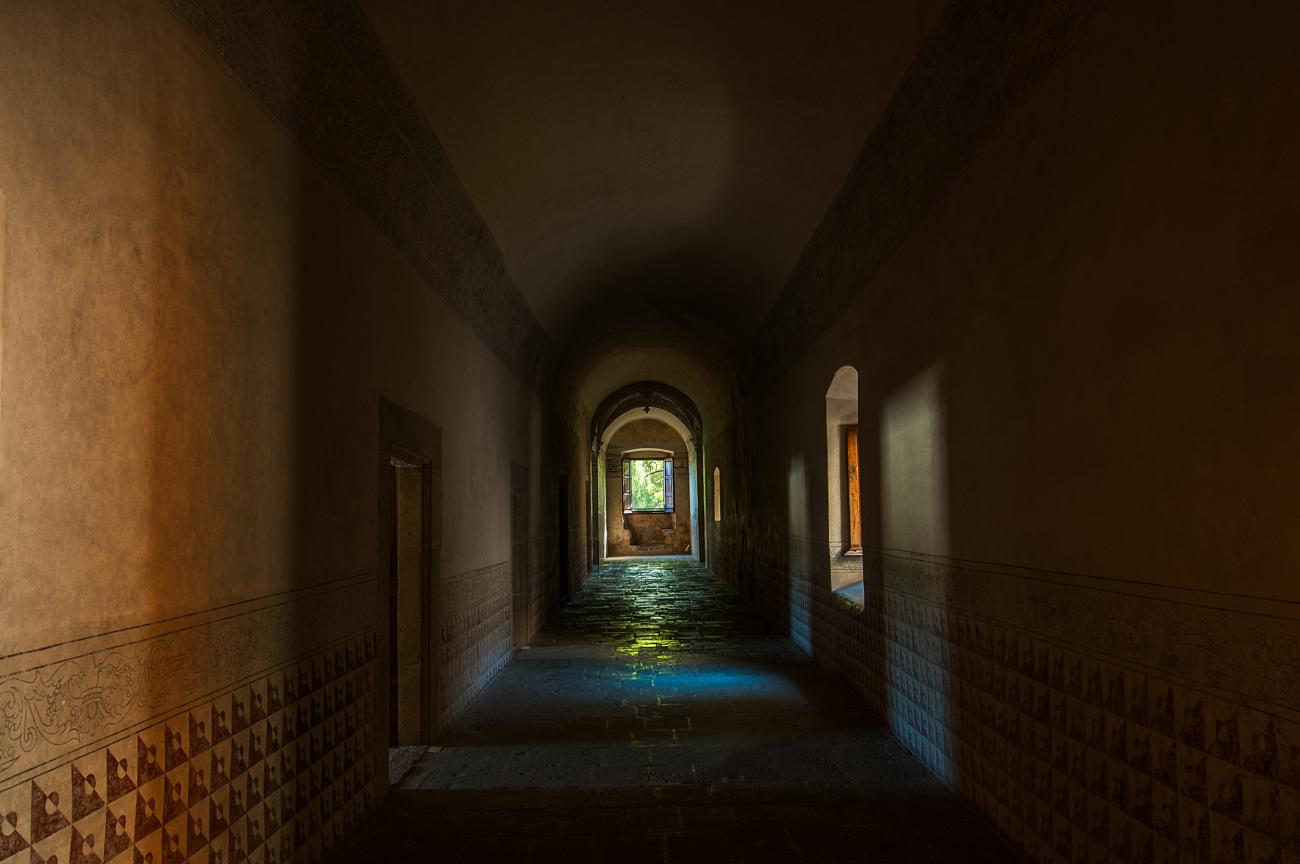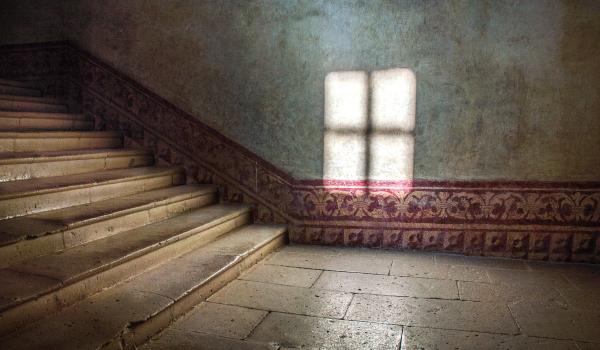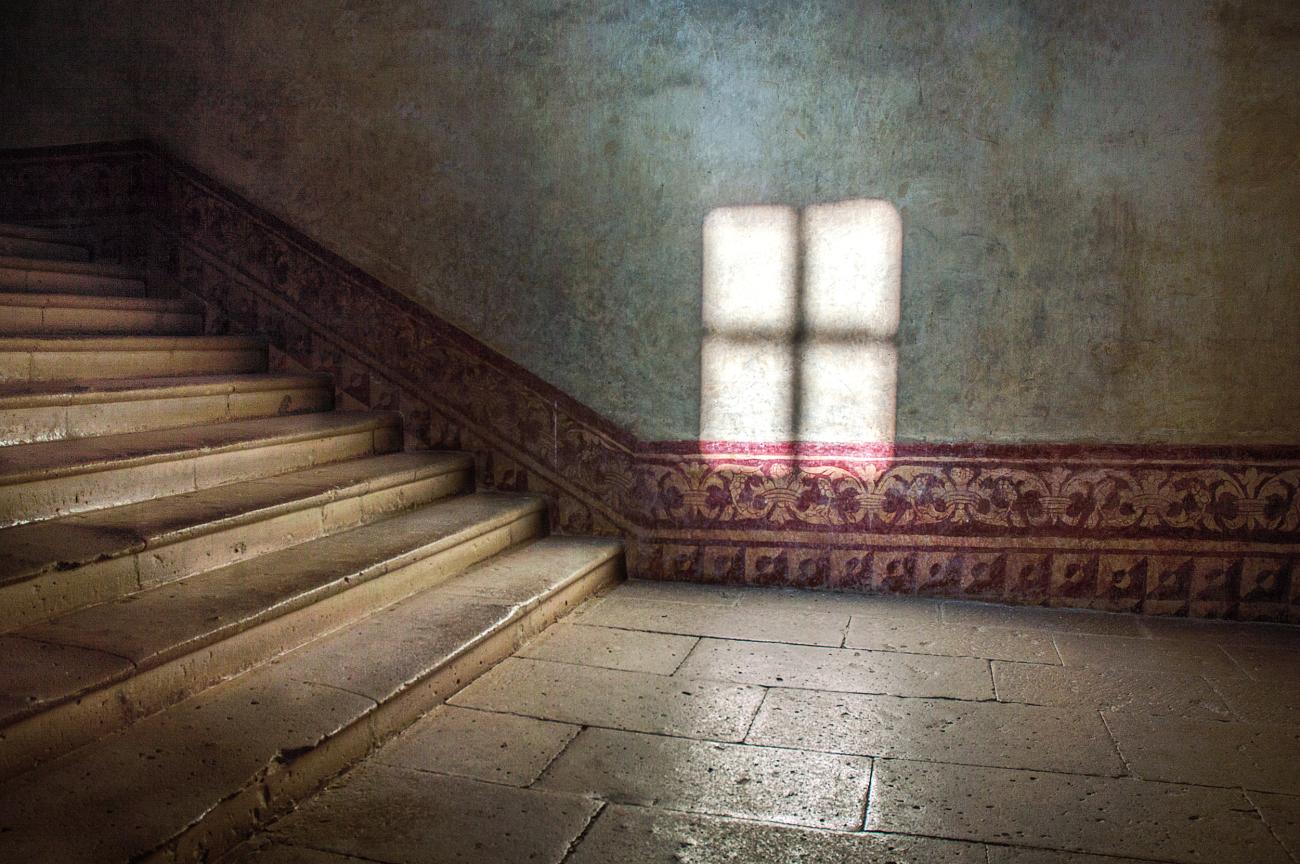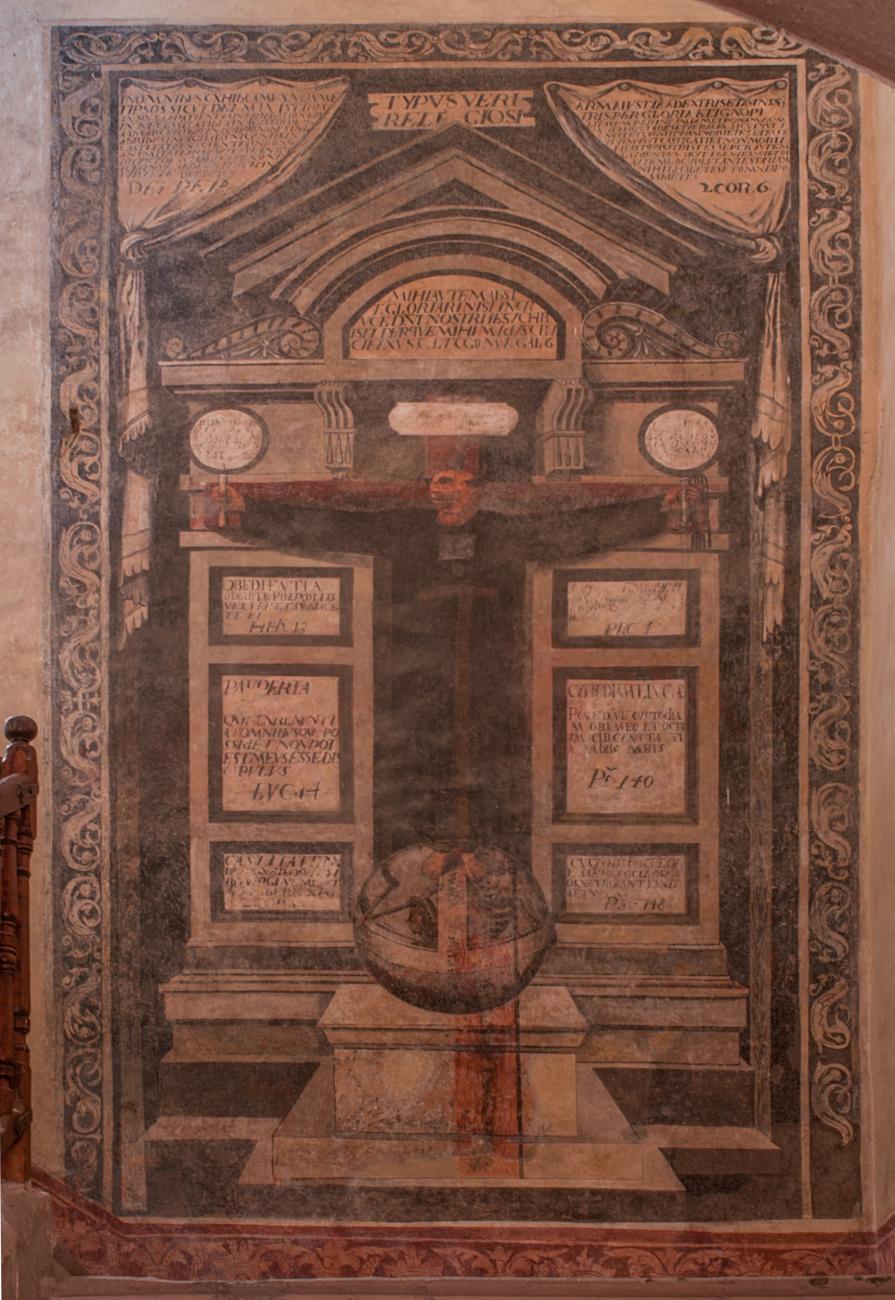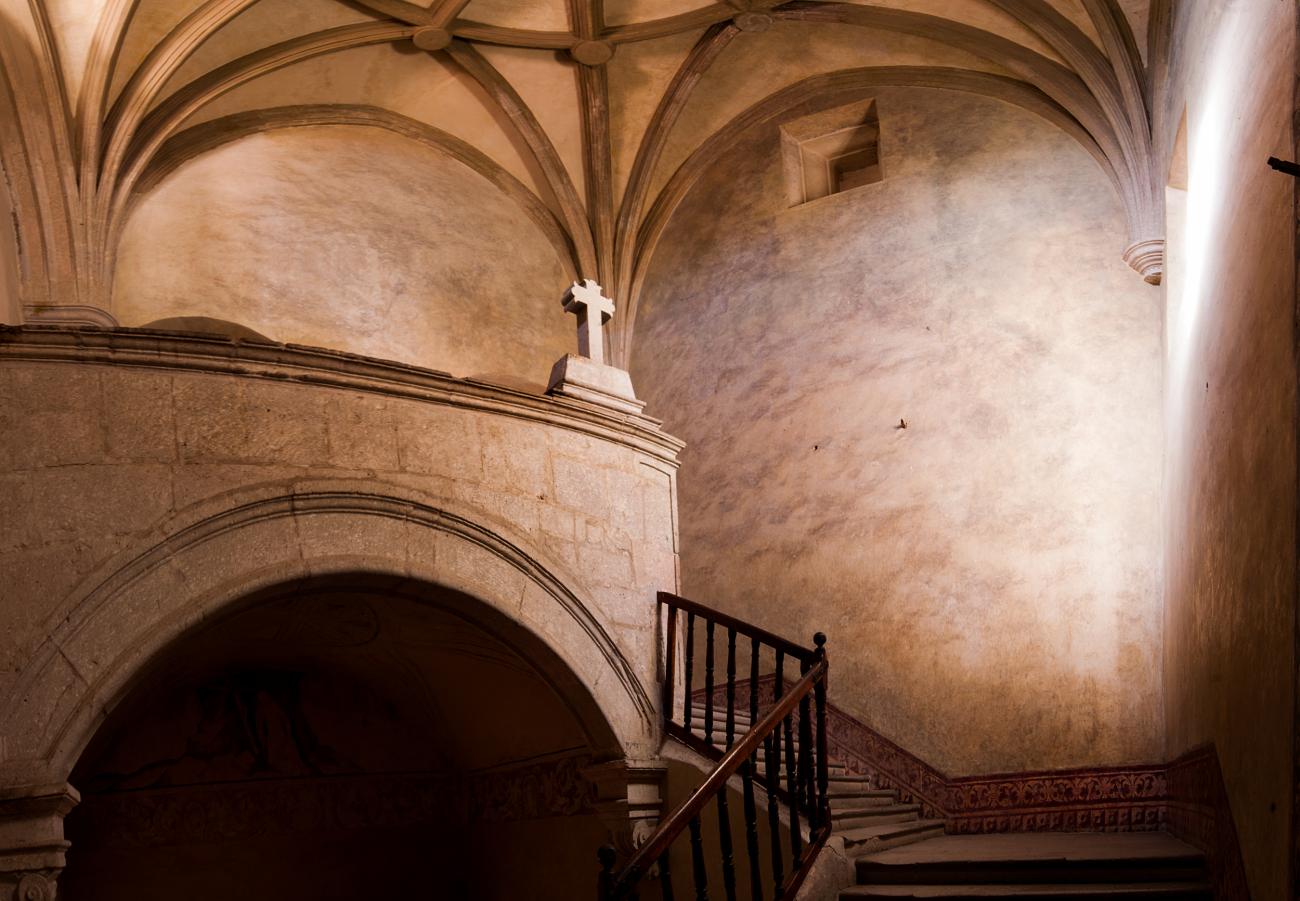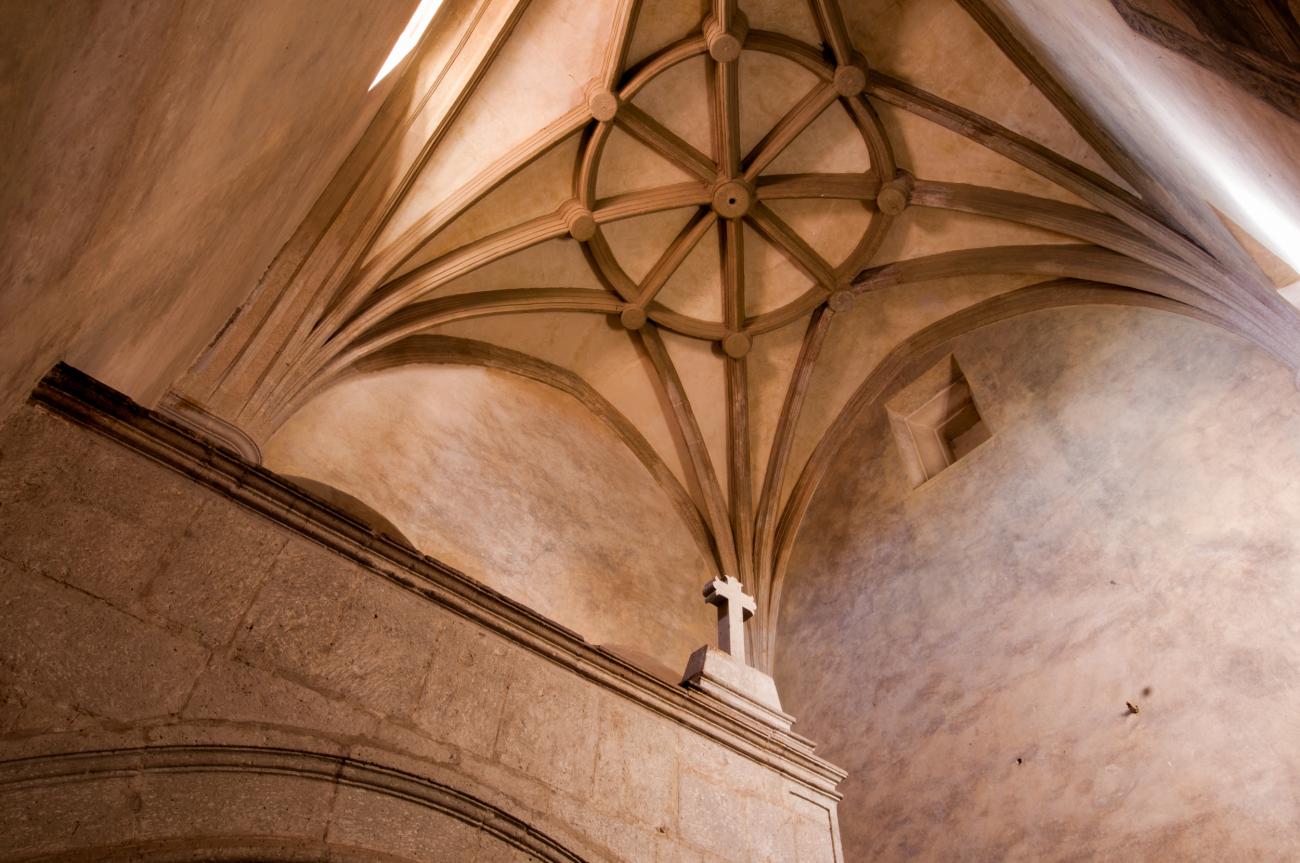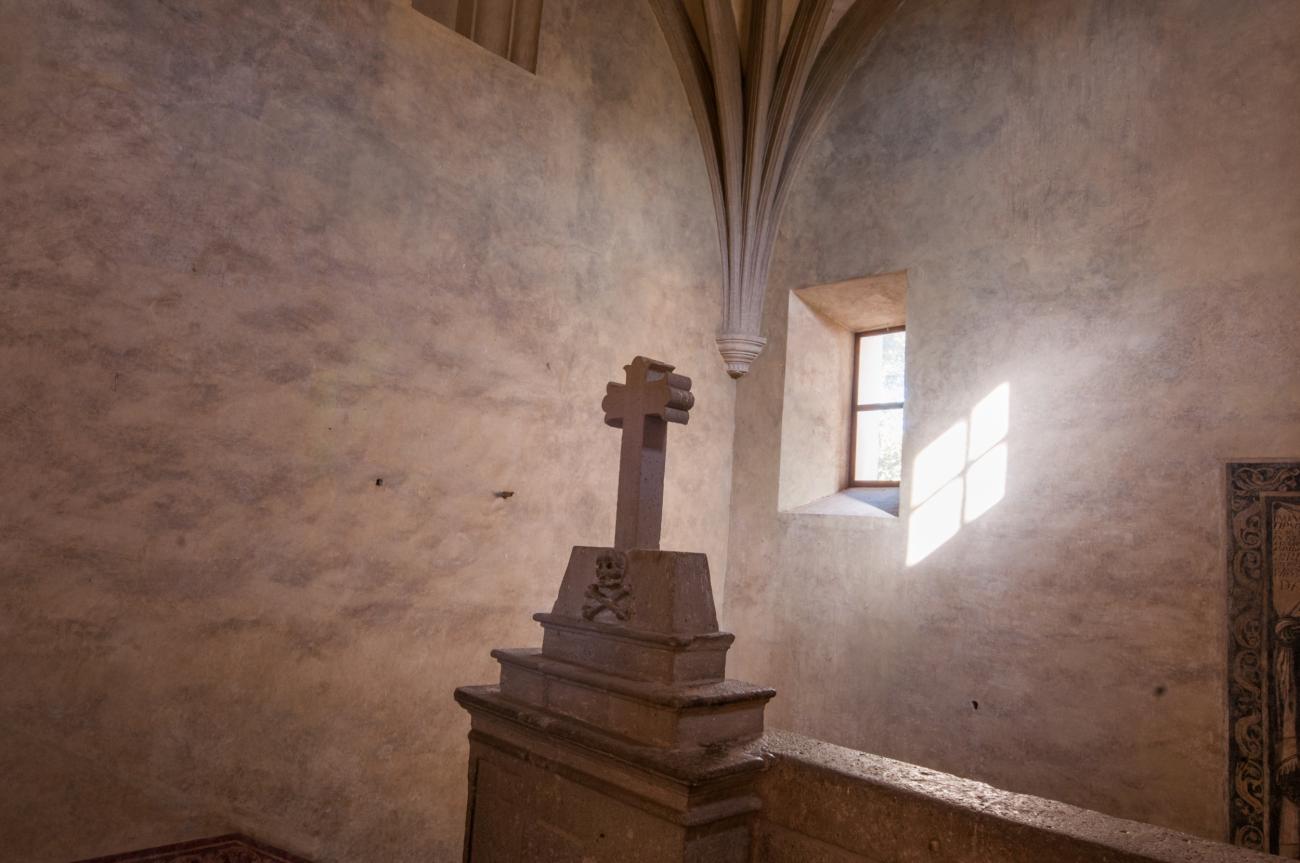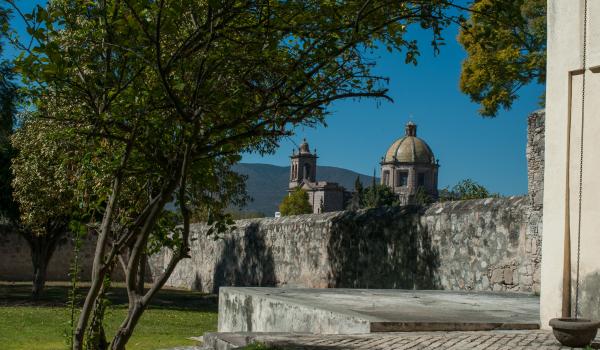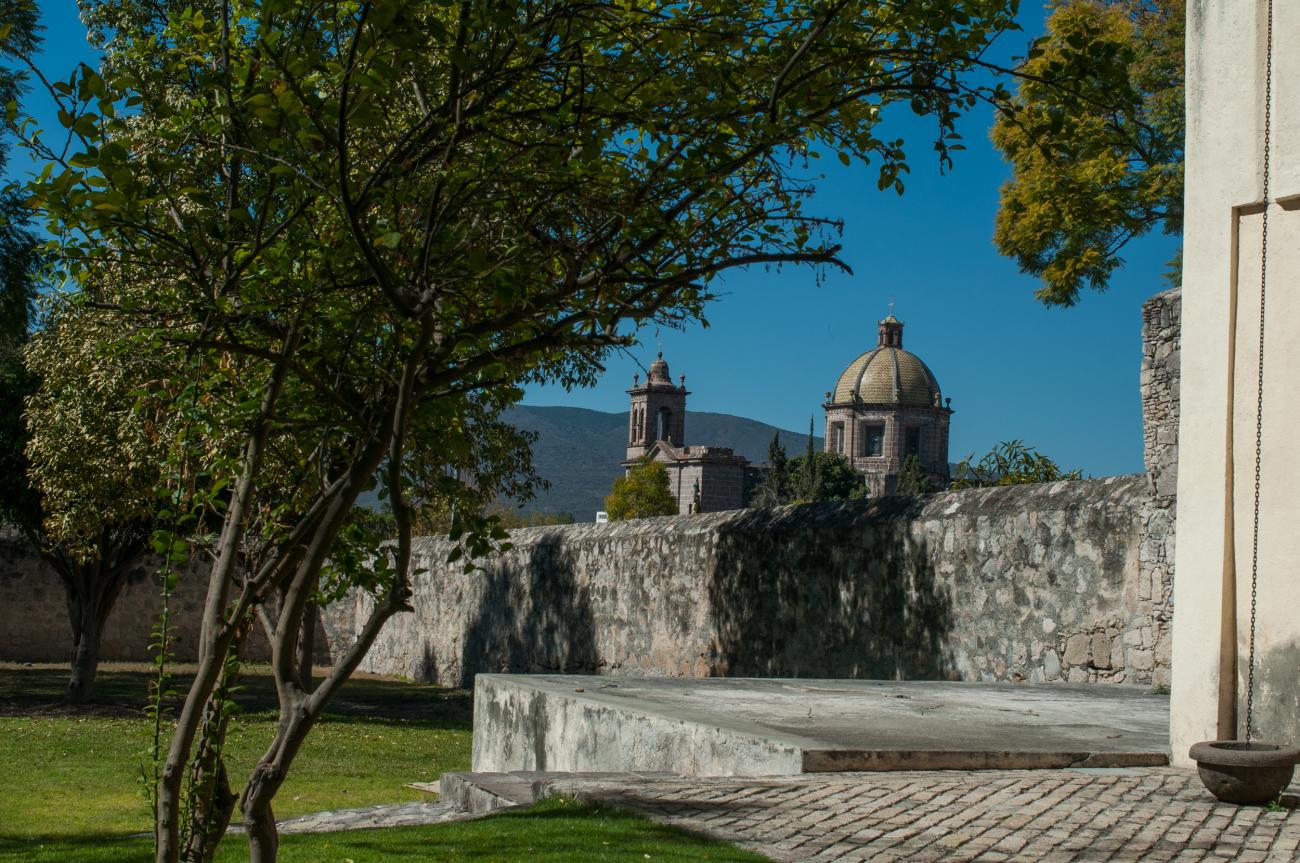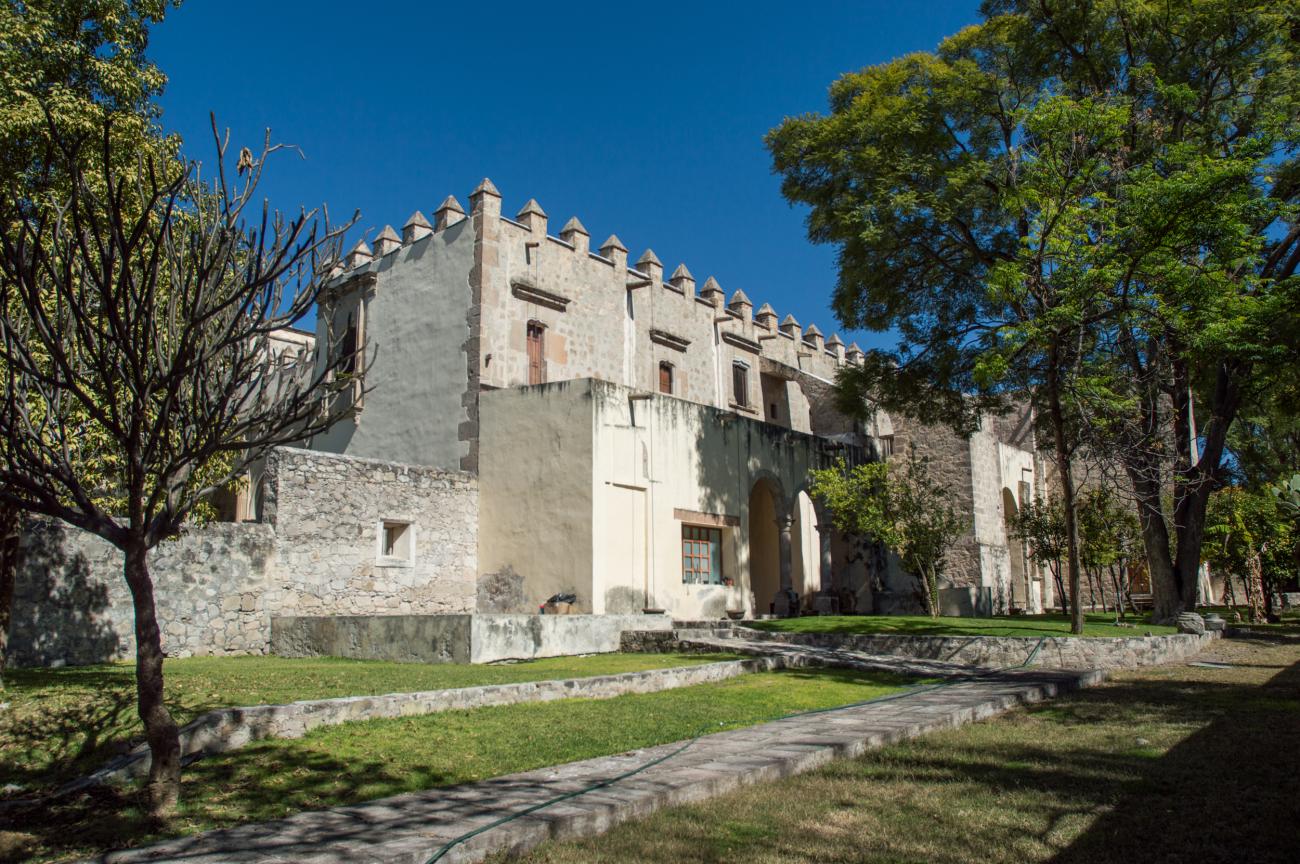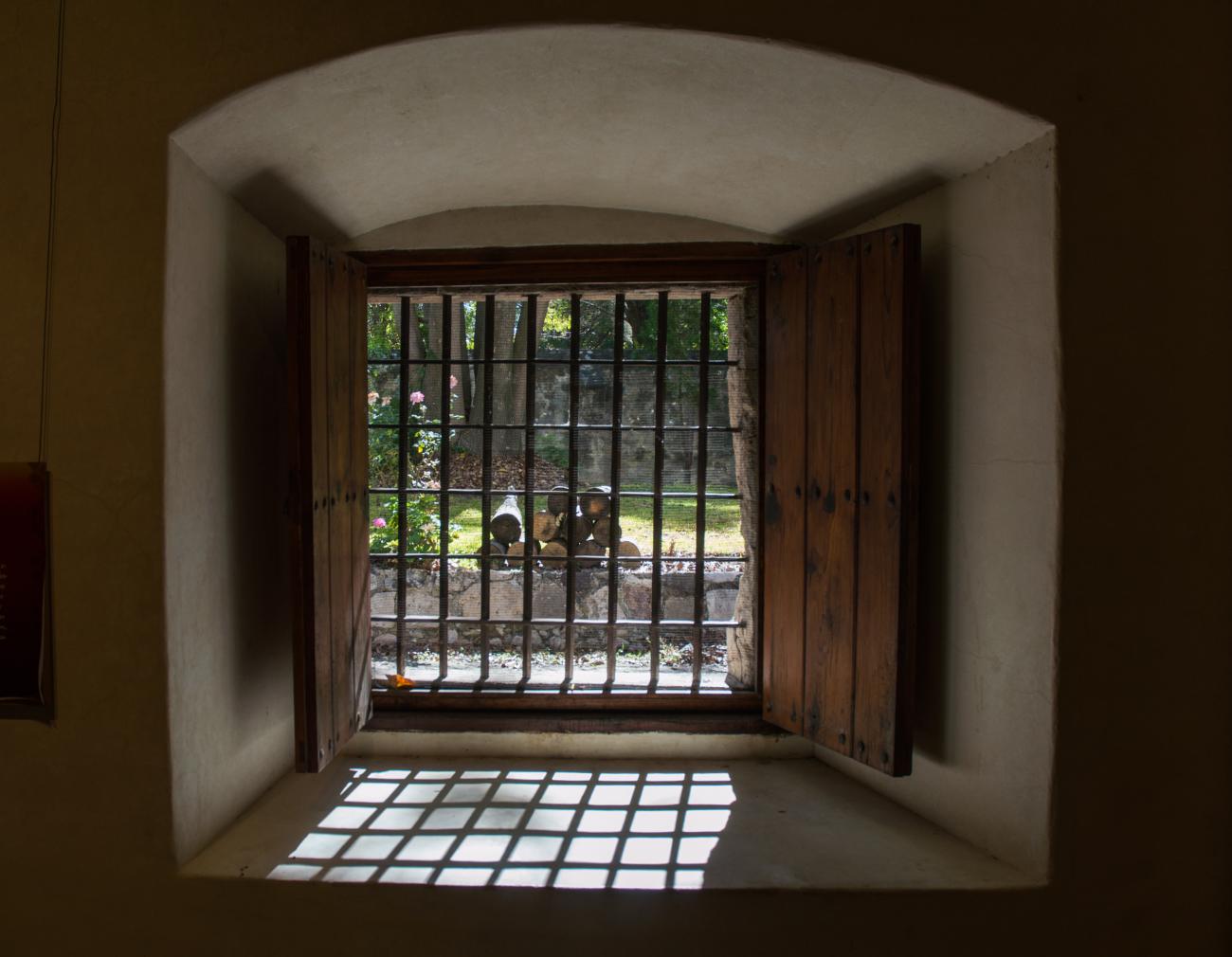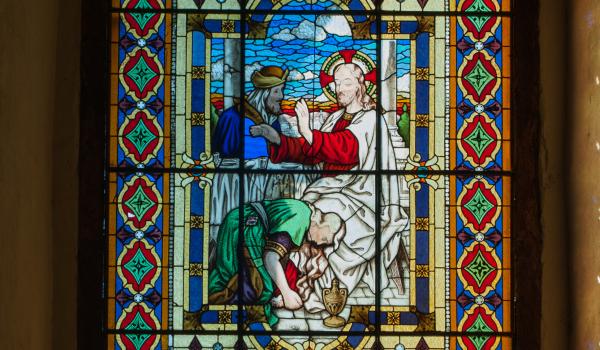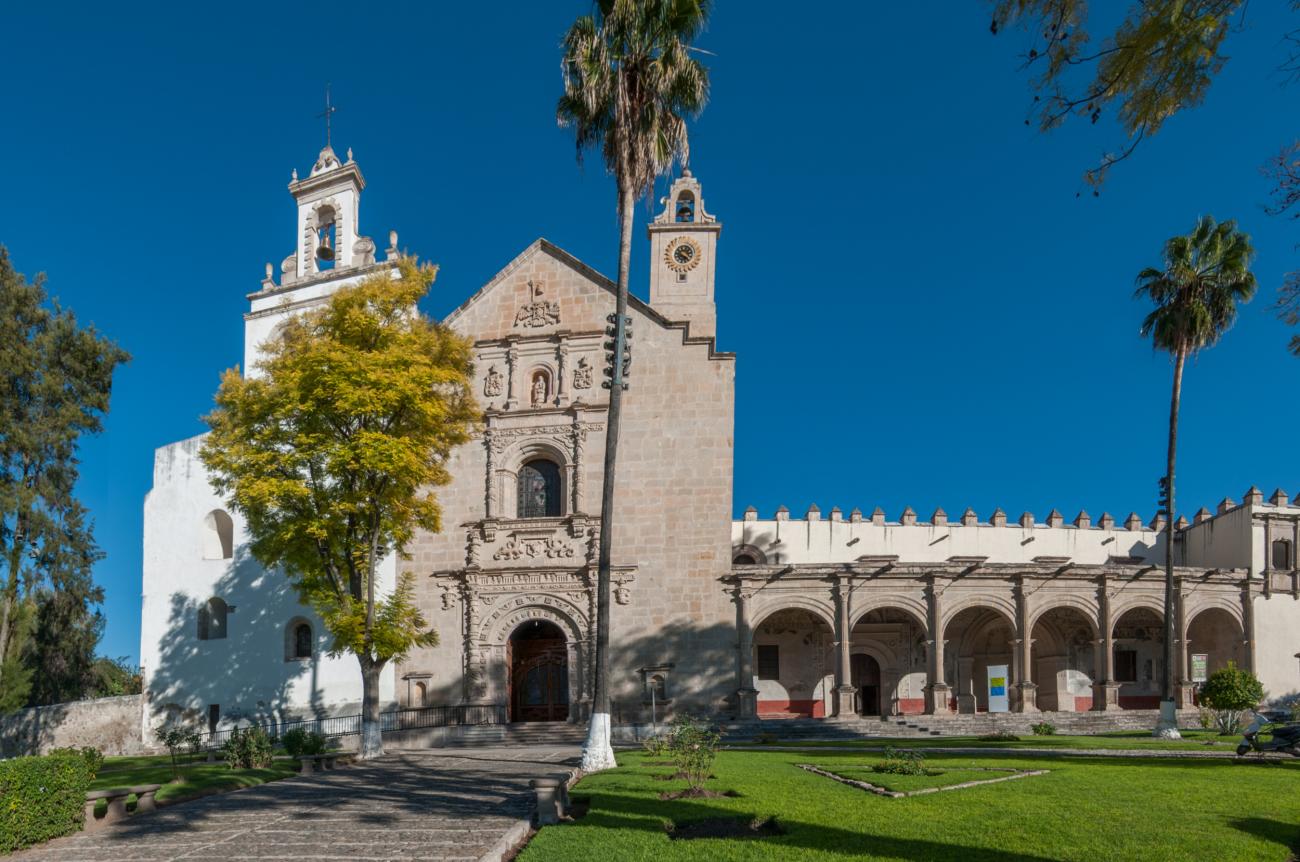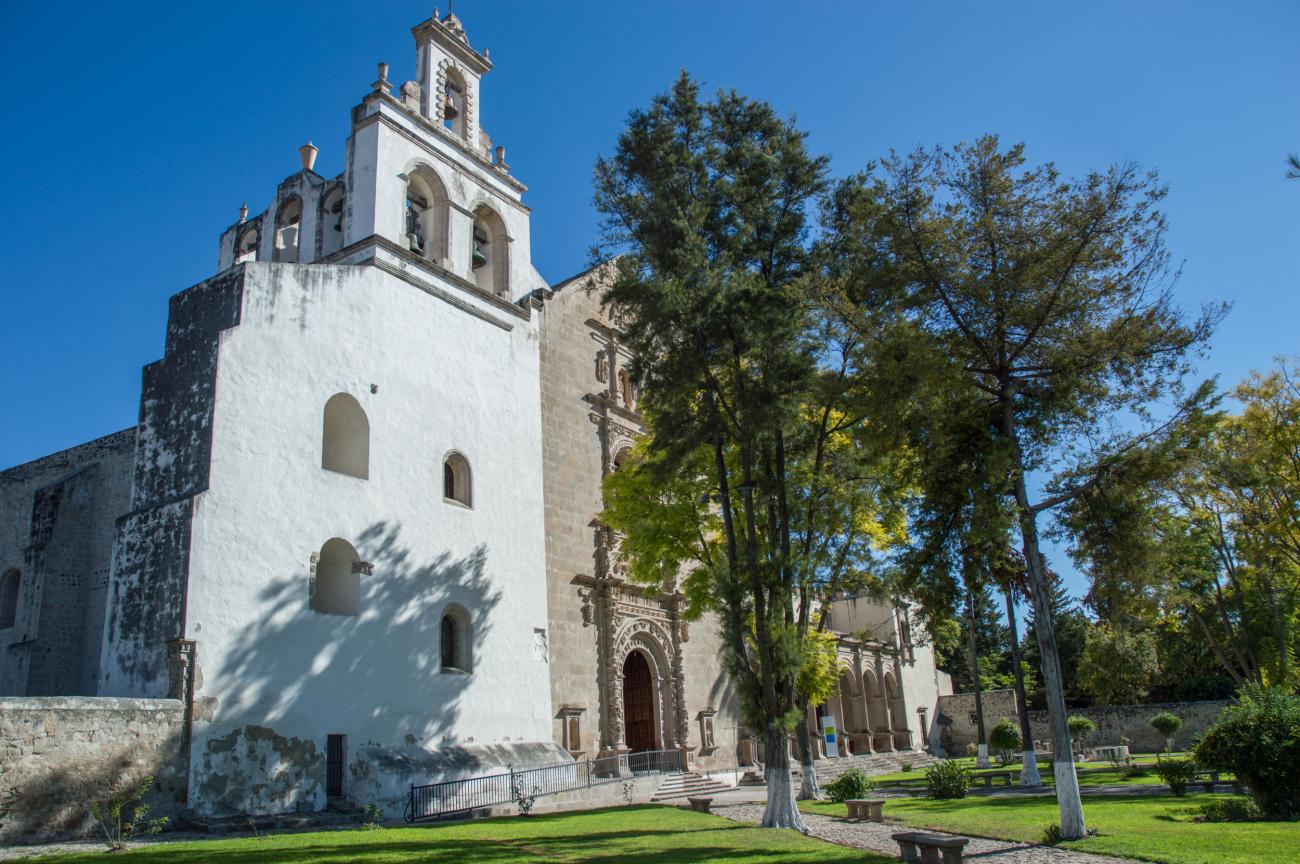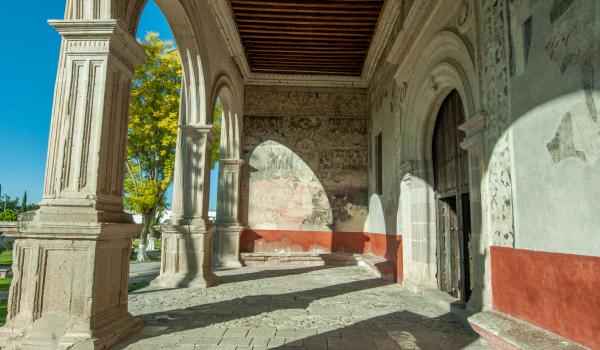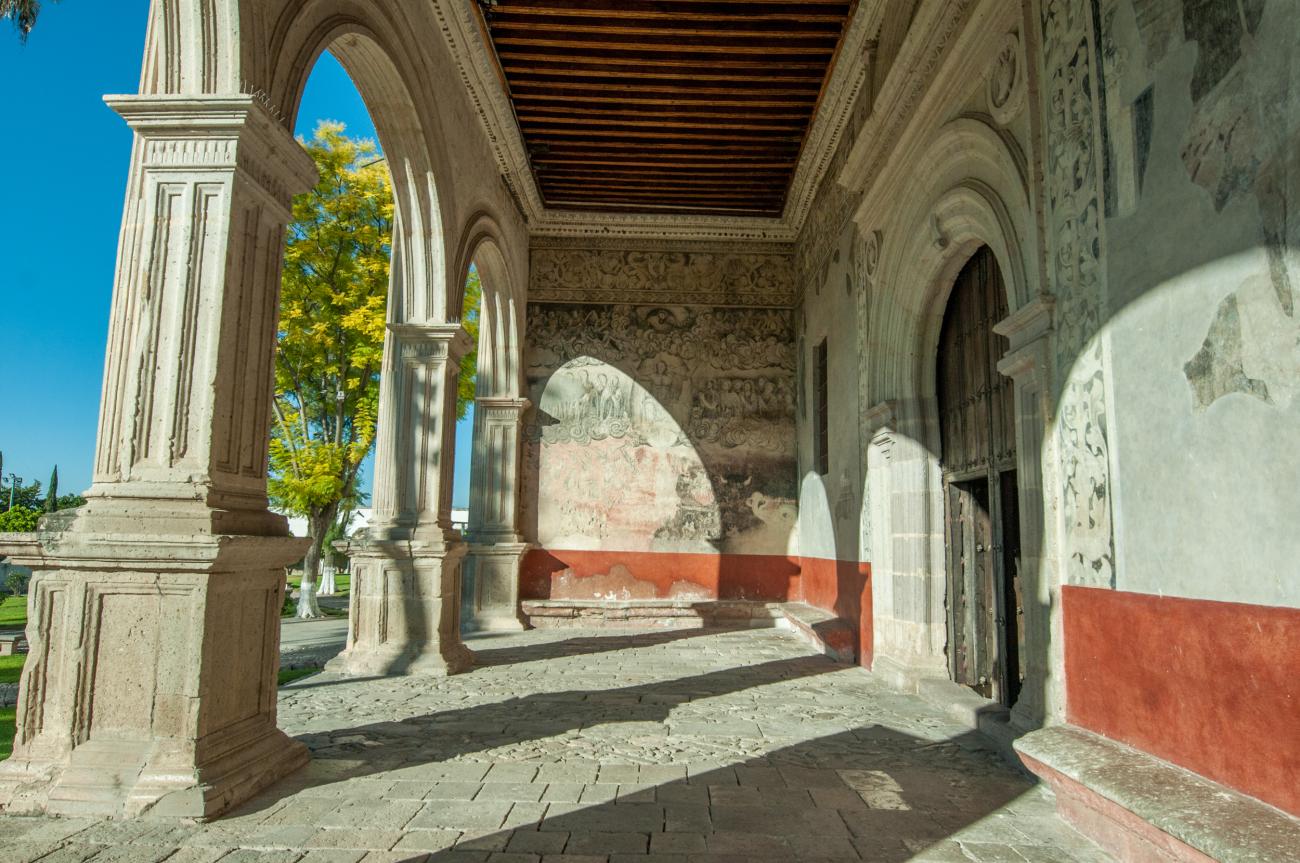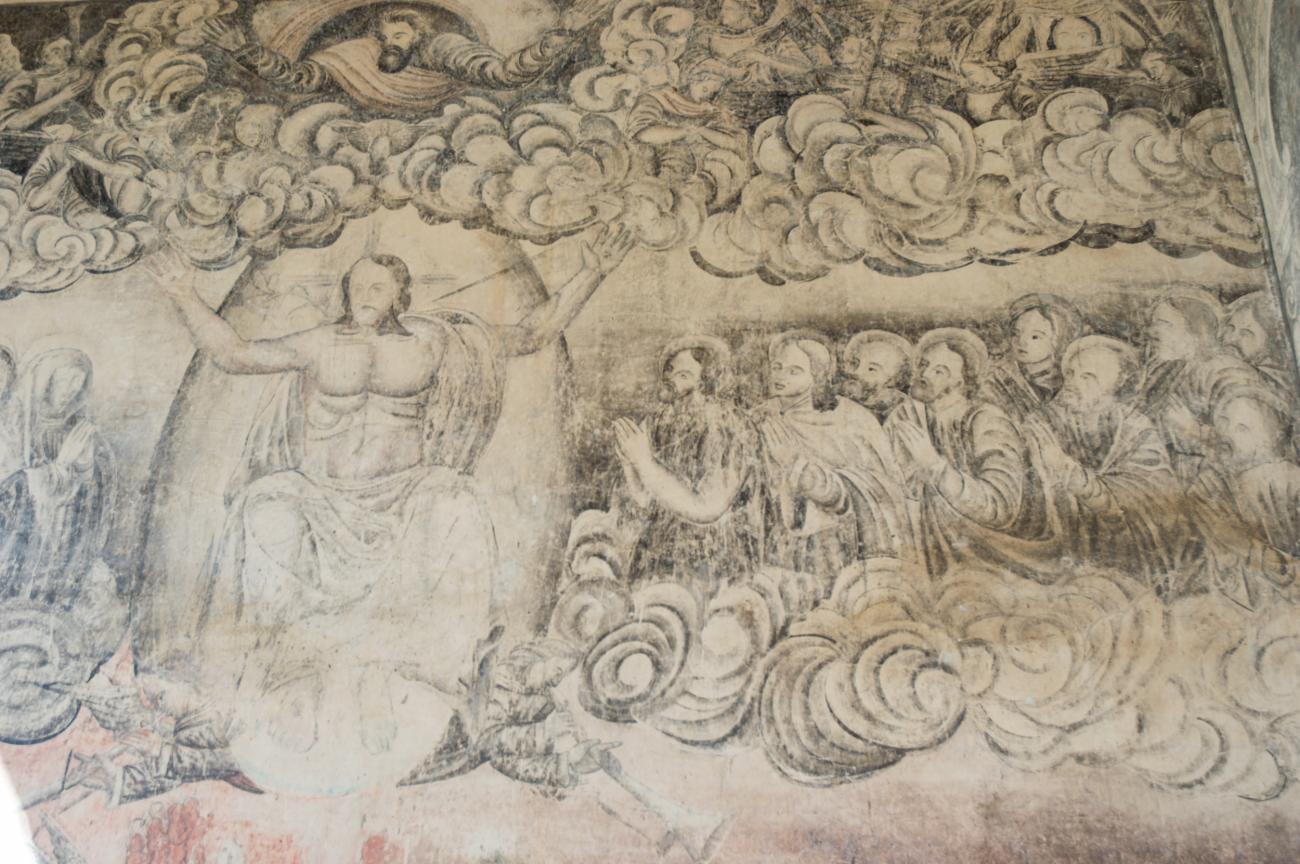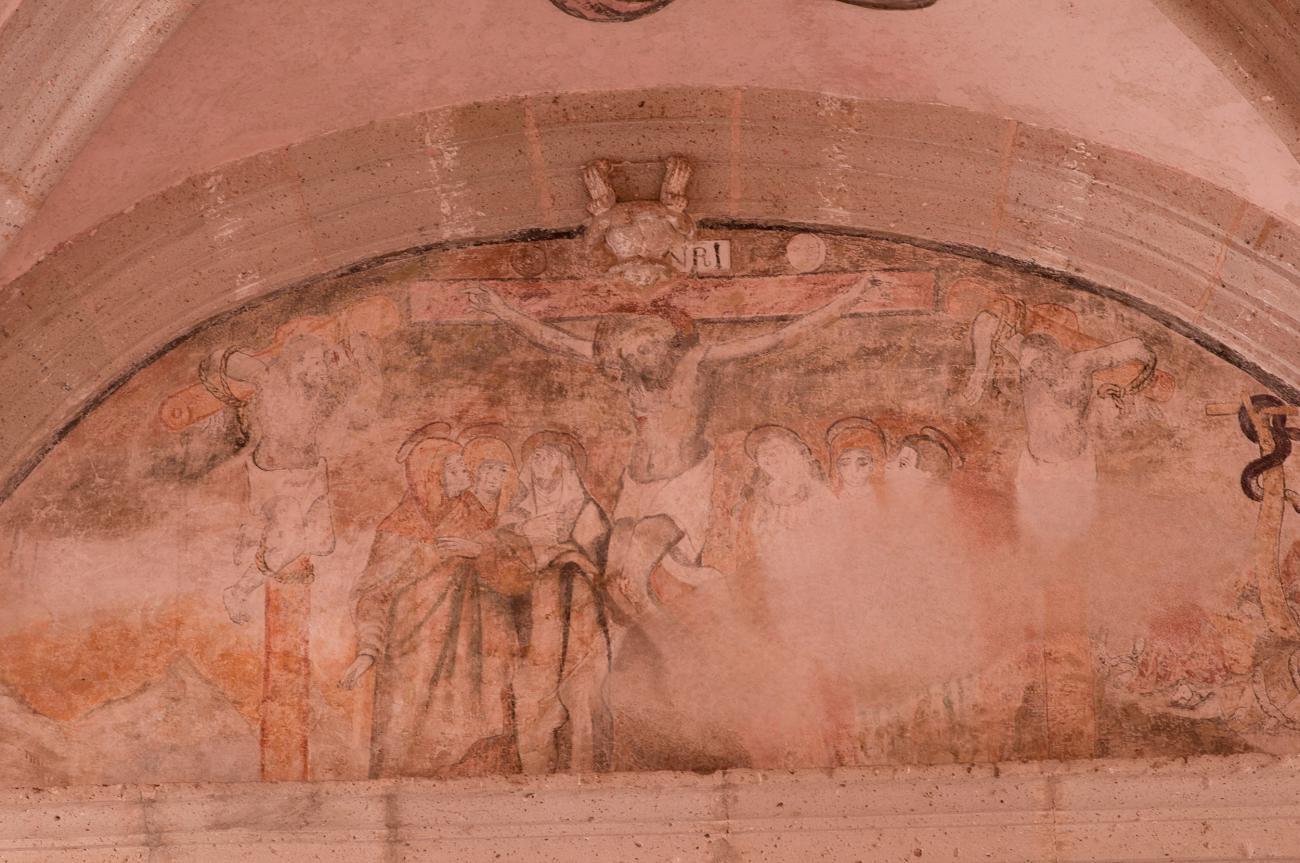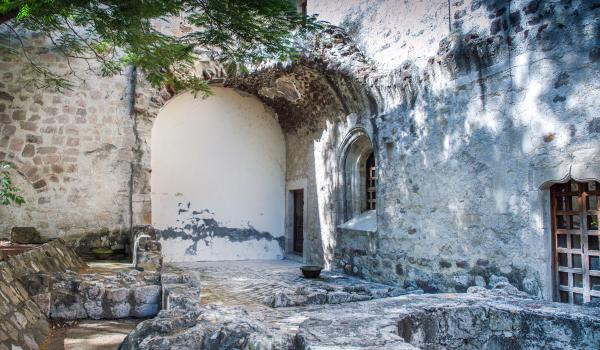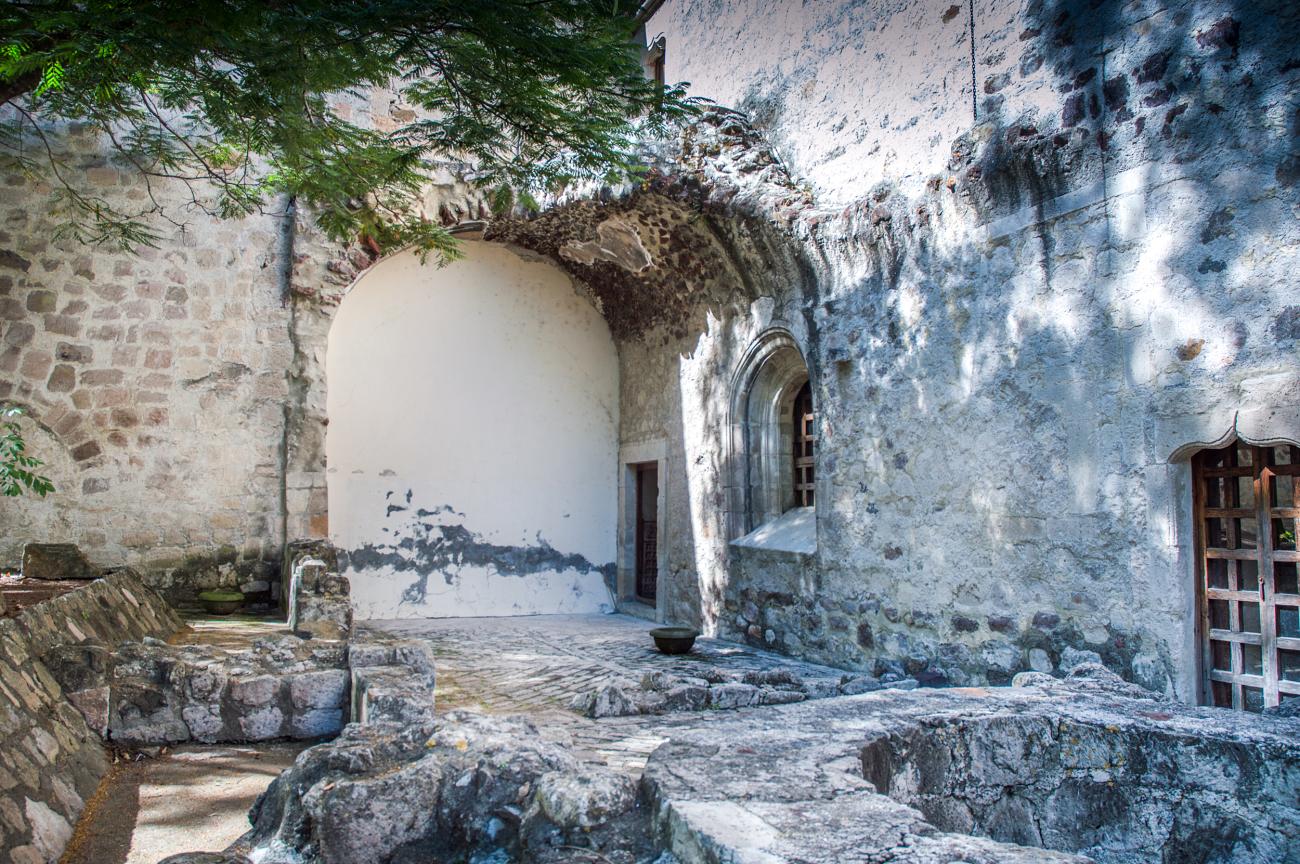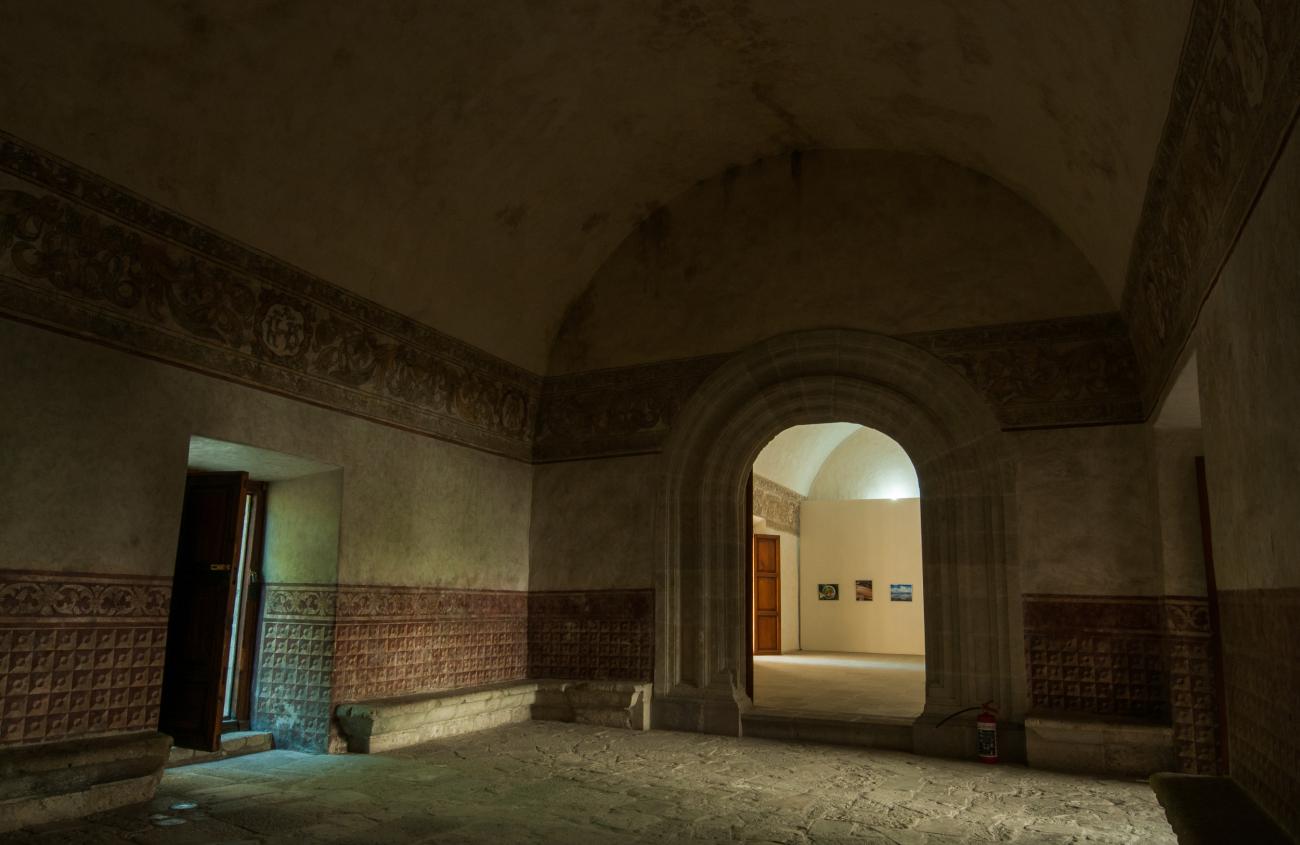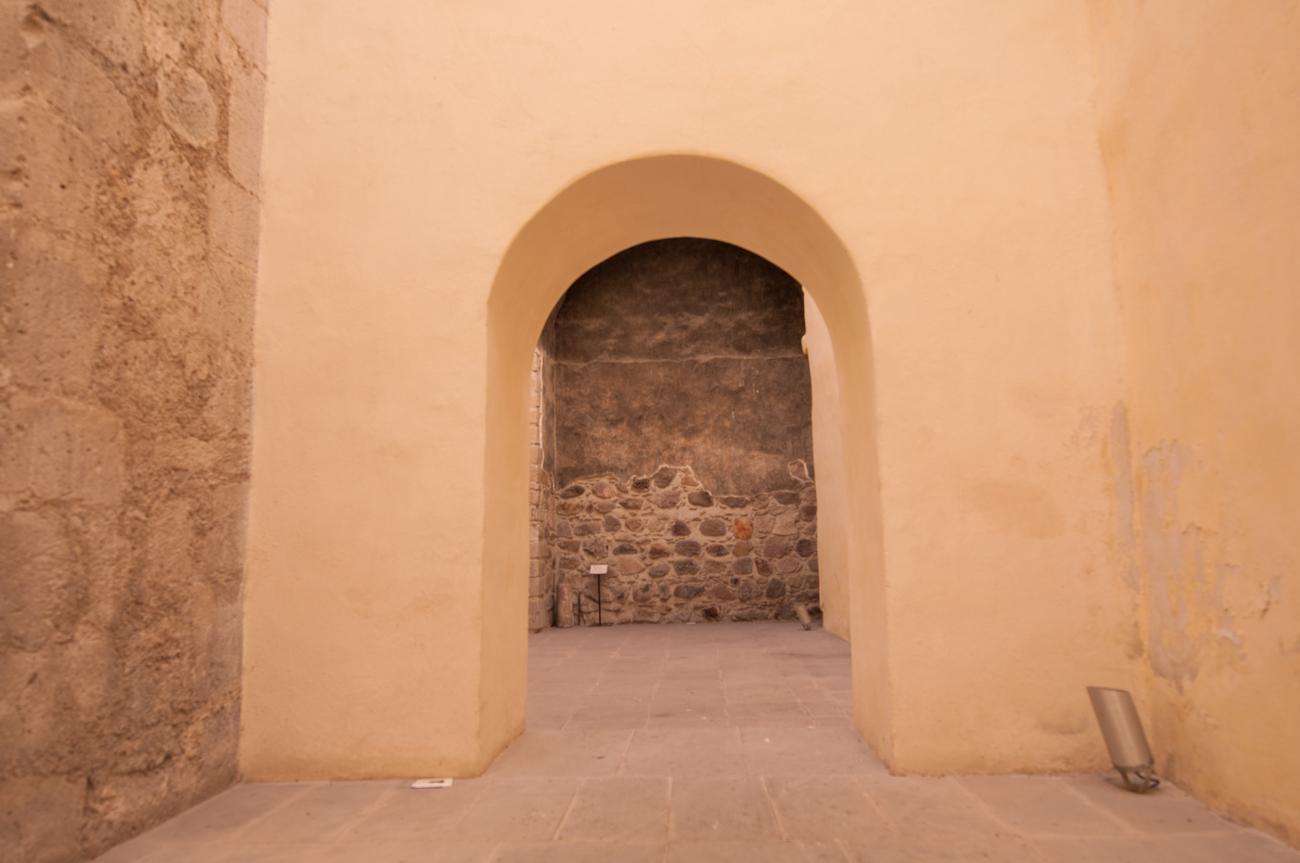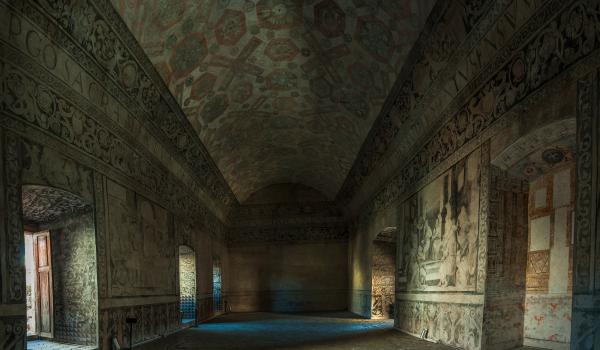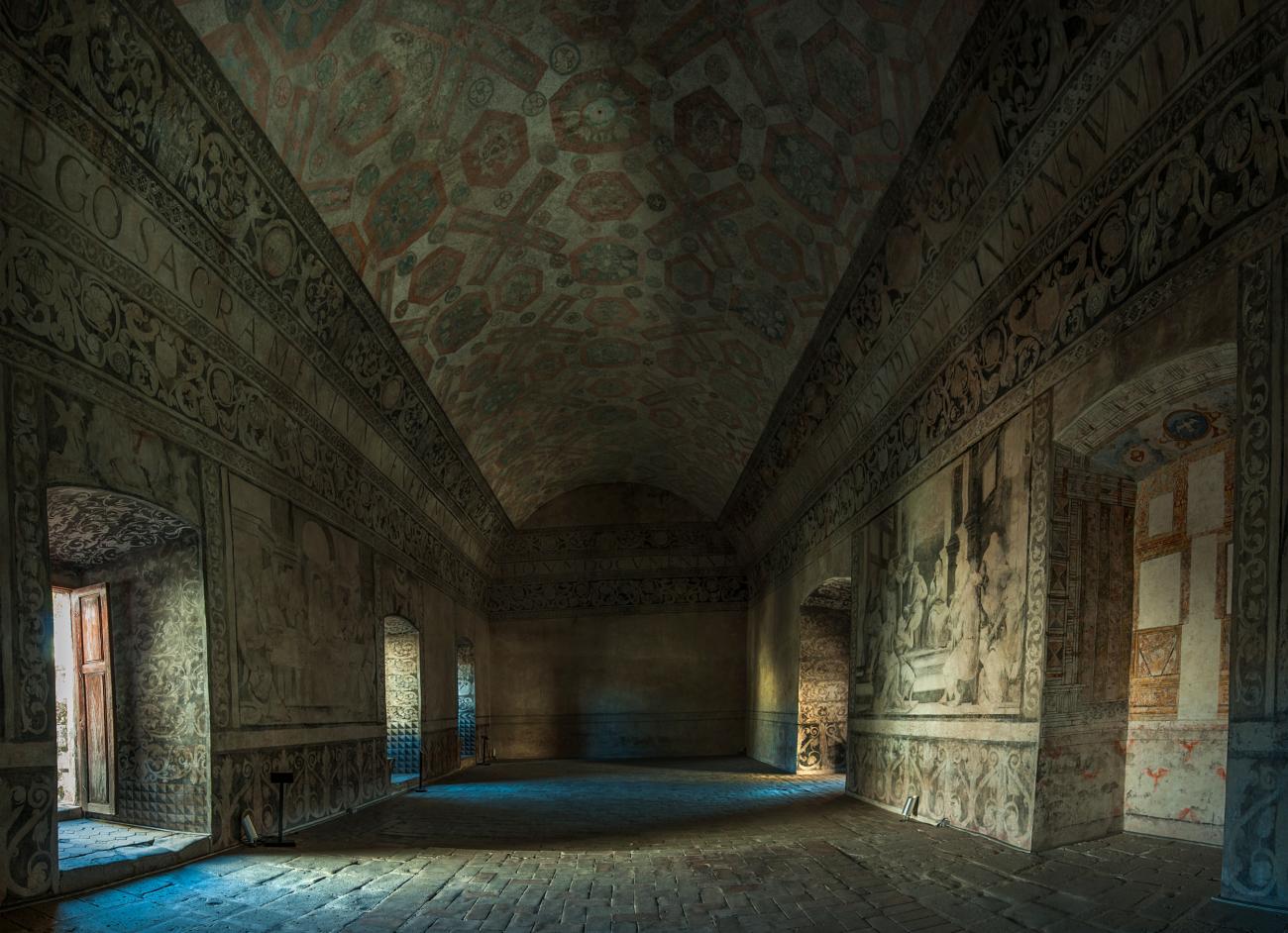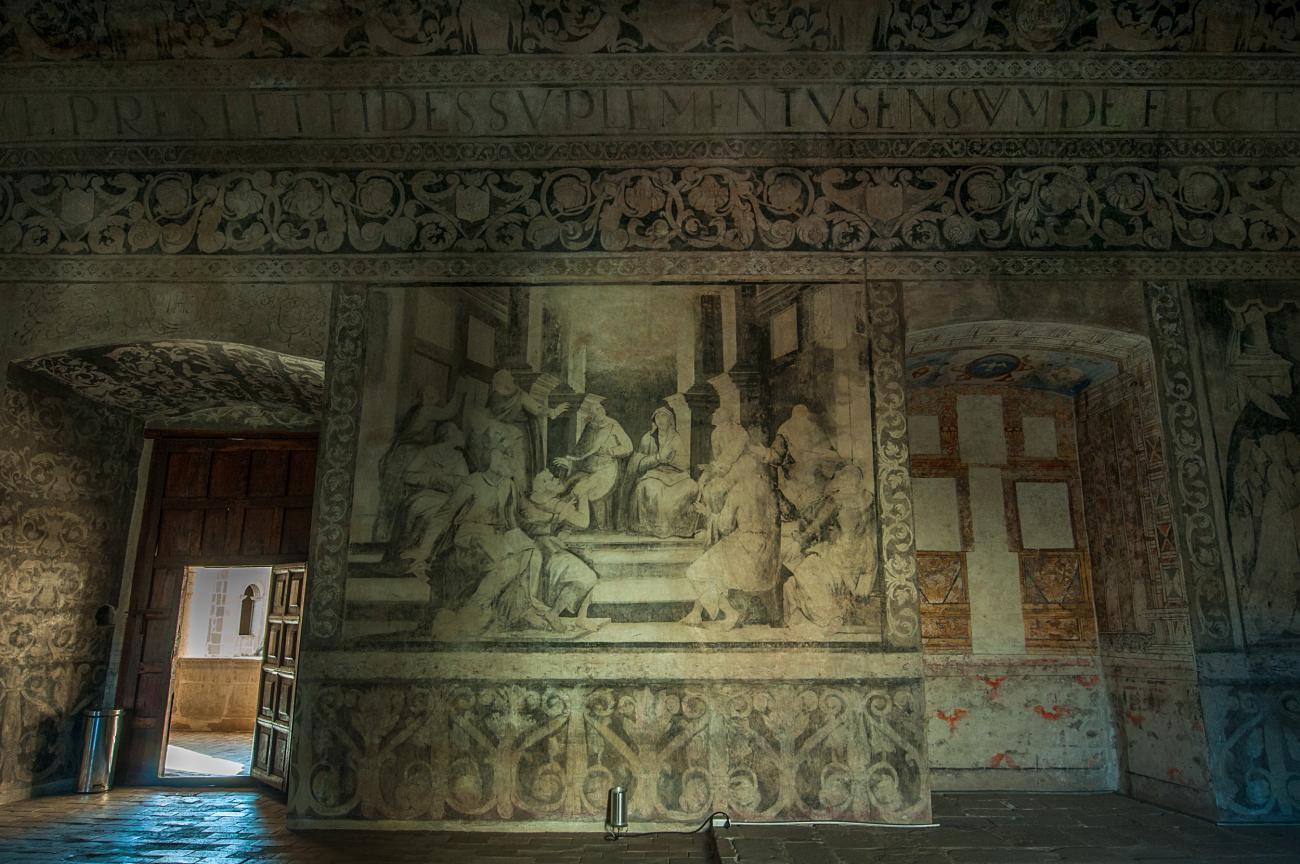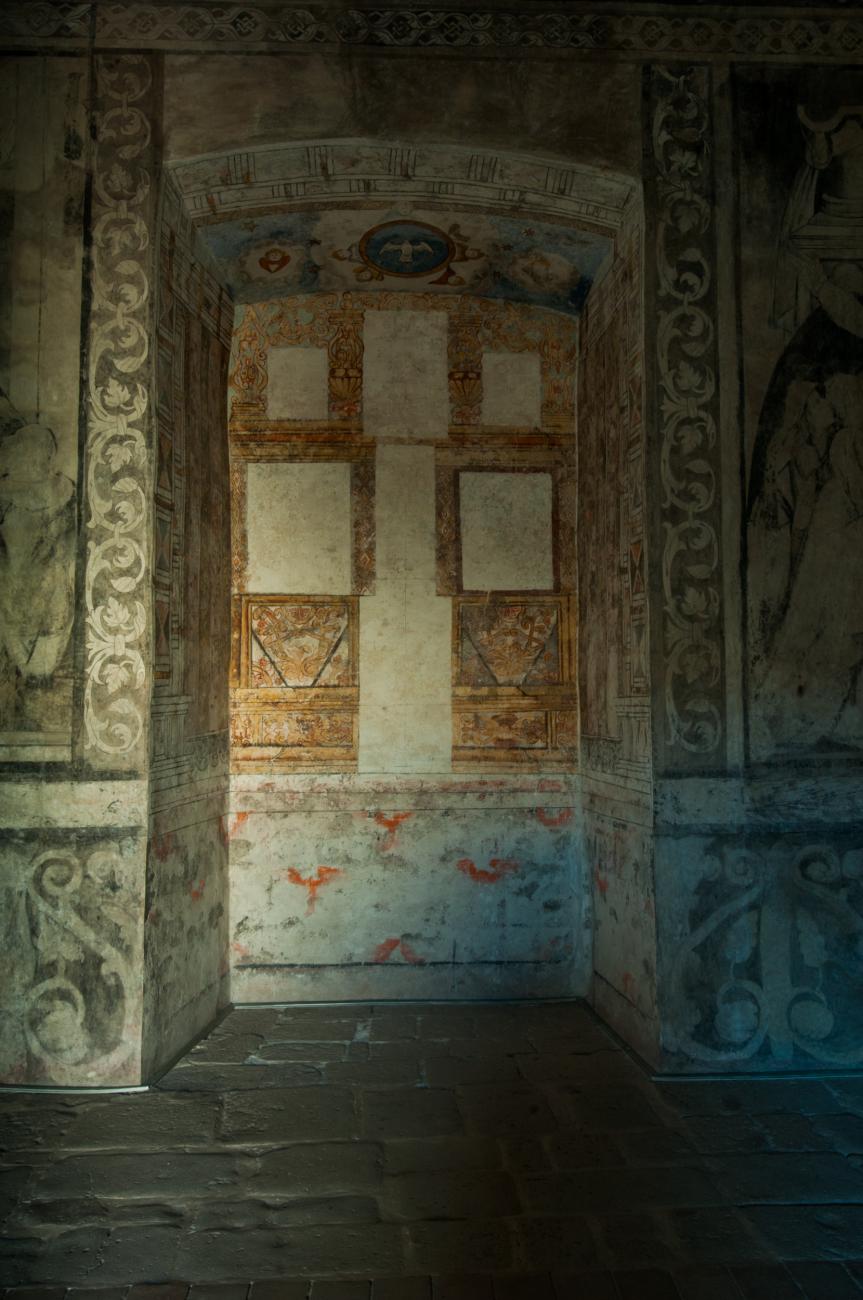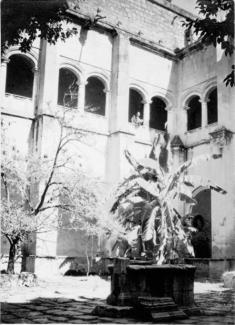One of the best preserved sixteenth-century monasteries in Mexico, nearly all of the original spaces are still extant. In 2004 INAH restored its roofs, walls, paintings, sculptures and books with the support of the federal government, the government of the state of Michoacan, the municipality of Cuitzeo and the “Adopt a Work of Art” charity in Morelia.
Cuitzeo used to be the principal town of what is known as the Chupicuaro culture, an off-shoot of the Purepecha fiefdom around 1500. It is situated in north central Michoacan, in the peninsular extension of the Cerro de Manuna (“evening star” in Tarascan) which juts out into the lake of Cuitzeo.
The Augustinians converted the region’s populace to Christianity and transformed the local economy. Around 1548 Don Vasco de Quiroga granted the priory of the future convent to Father Fray Francisco de Villa Fuerte, head of the religious foundation of the place. The friar was an expert missionary, and along with Fray Miguel de Alvarado, they managed to consolidate and extend the evangelization begun by the Franciscan Fray Juan de San Miguel, and they began to build the church, monastery and to rebuild the hospital (the Indian Chapel), and at the same time they started work on a new plan for the indigenous town. Fray Diego de Chávez implemented the work with the participation of Pedro de Toro, always with a large and skillful Tarascan labor force. It is important to mention the delicate sumptuousness of the monasteries designed by the Augustinians, with their beautiful wall and ceiling paintings.
The old Santa María Magdalena monastery consists of a church, monastery, atrium and garden. The decoration of the church facade is in Plateresque style, with its predominance of straight lines and simple ornamentation. In Europe the order was involved with silver work. The doorway is notable for its refined columns which imitate candelabras, the stone carving has traces of plant imagery with feint climbing plants, and its angels and hearts are in complete harmony, lending it a sober balance. The facade has a half-circle rounded arch. On the second floor the stained glass window of the choir represents Mary Magdalene washing the feet of Jesus, and the keystone in the center of the arch stands out with a shield depicting the heart of the Redeemer above the three nails from the cross overlaid as a star, the symbol of the Augustinians.
A covered niche in the final section of the facade has a sculpture of St. Mary Magdalene. On the sides there are two shields crowned with an indigenous diadem and feathers and the quarters feature some large jars or pots and some pelicans, the former referring to the name of the place, since Cuitzeo in Tarascan means “place of the large pots on the water,” while the latter refer to the native birds of the lake, and since mother pelicans feed their chicks with their own blood, they symbolize the Holy Spirit and the Mother Church. The final section has another shield in the center, the Austrian double-headed eagle is a reference to Charles V and Philip II, while the pointed heads of the eagle bow to the heart of Jesus in the center. The temple has a single nave with a barrel vault and bell tower.
All this decoration is carved in relief from stone. The accuracy of the work is a testament to the mastery of the indigenous craftsmen, who learned their skills before the Spanish arrived.





